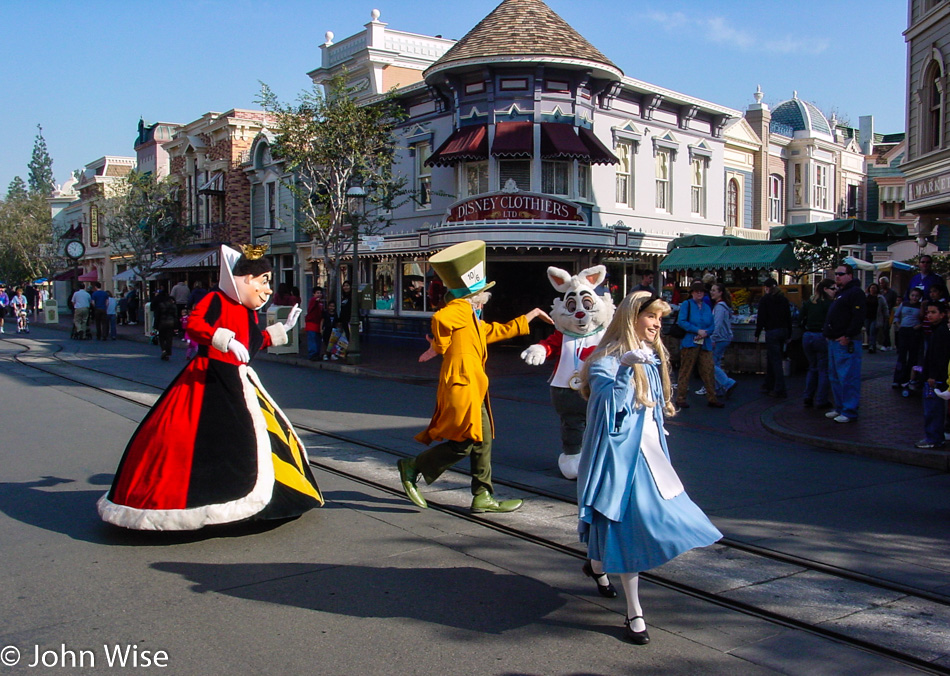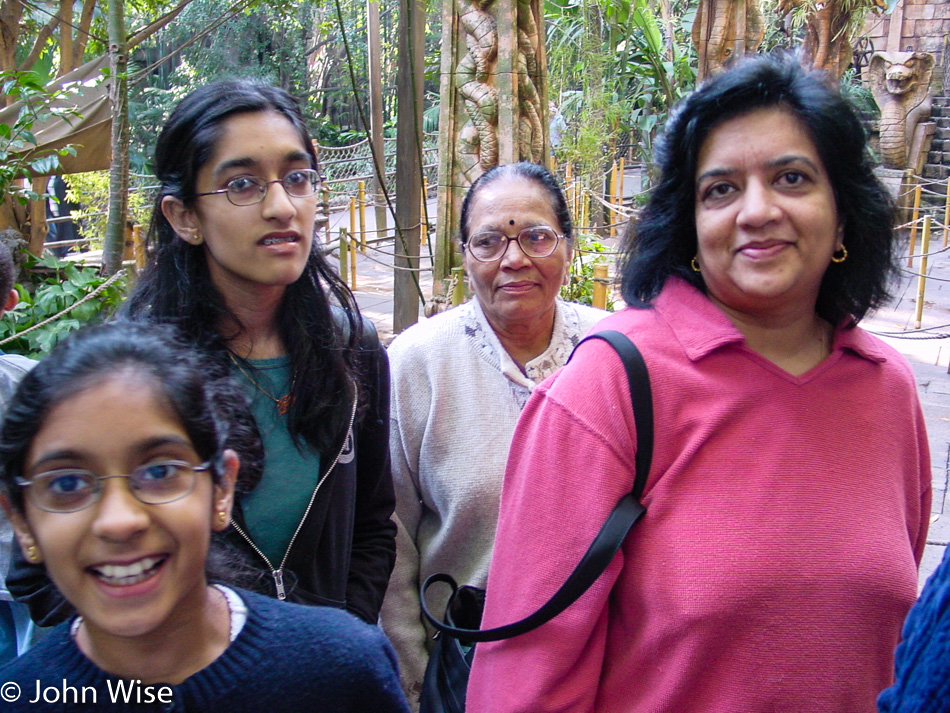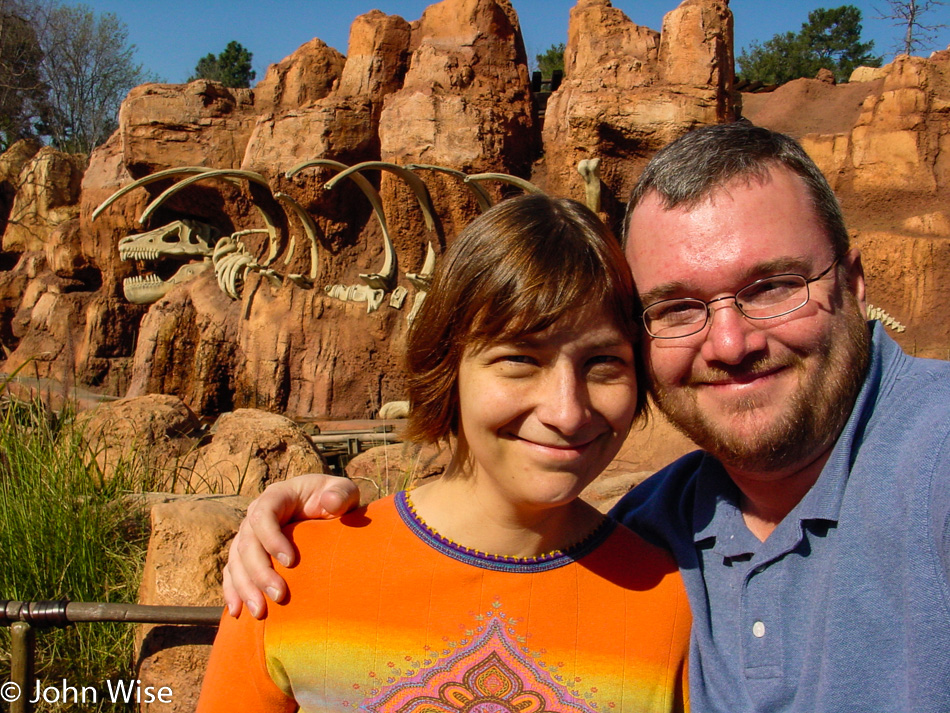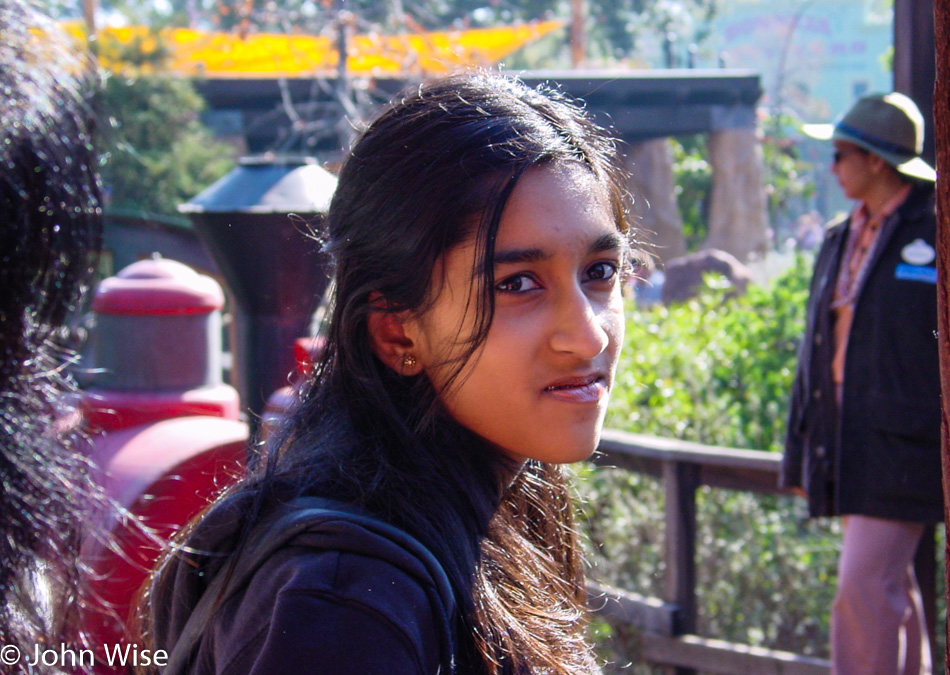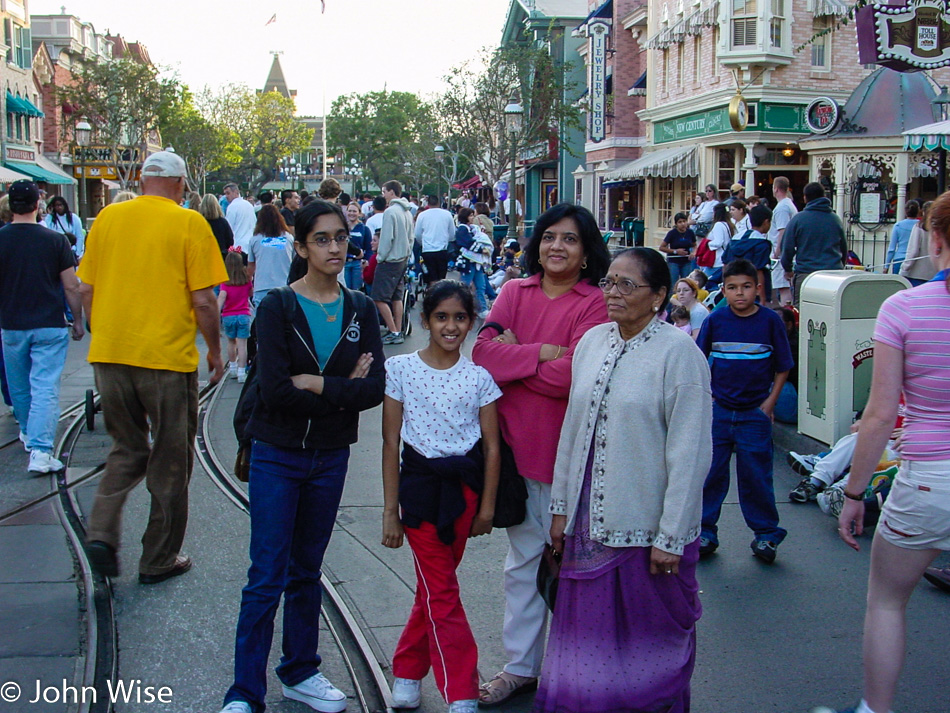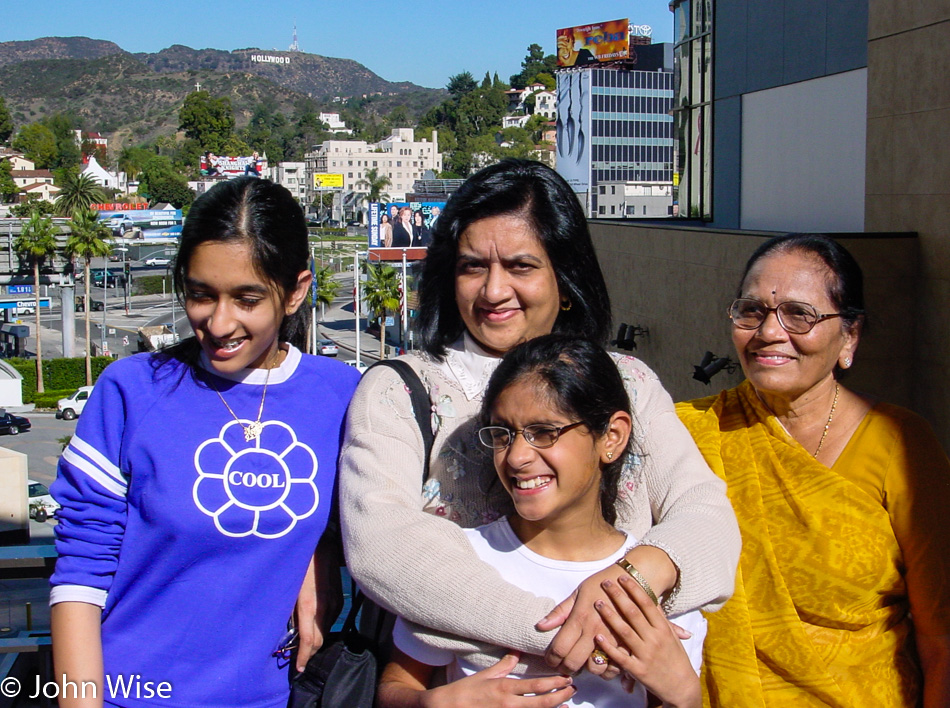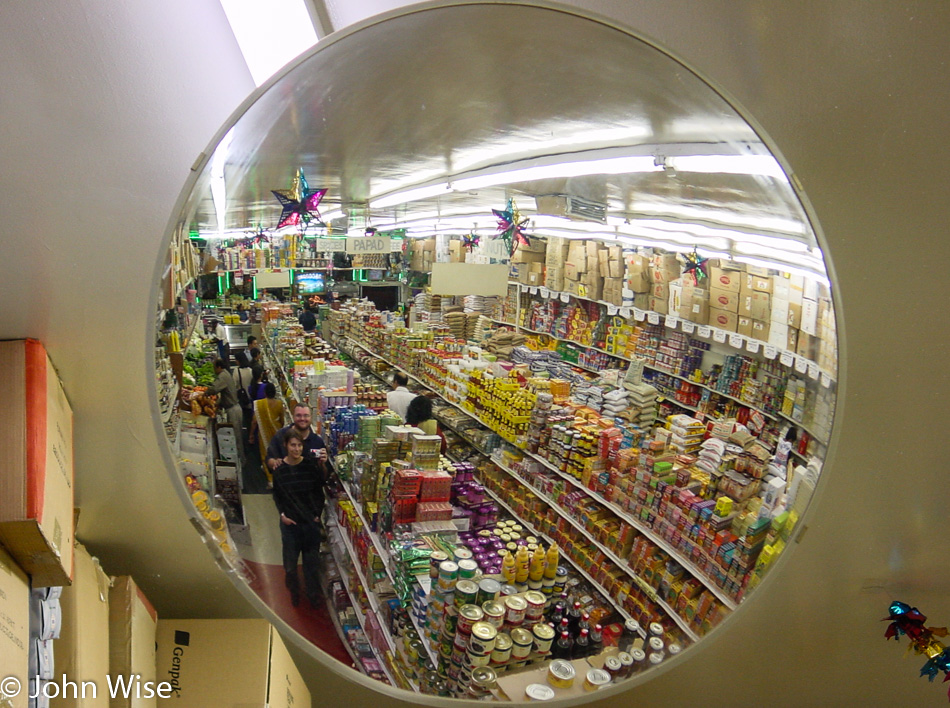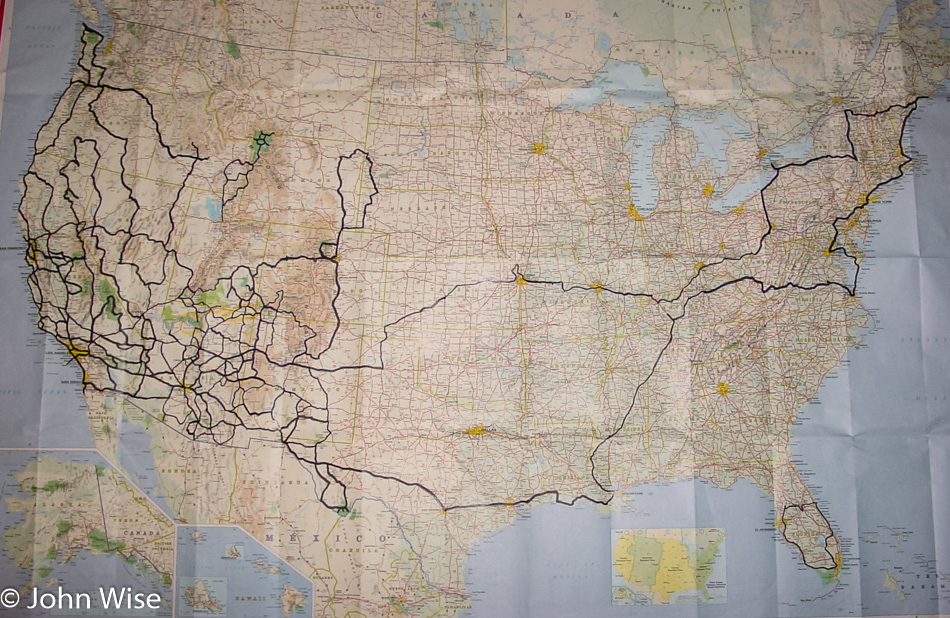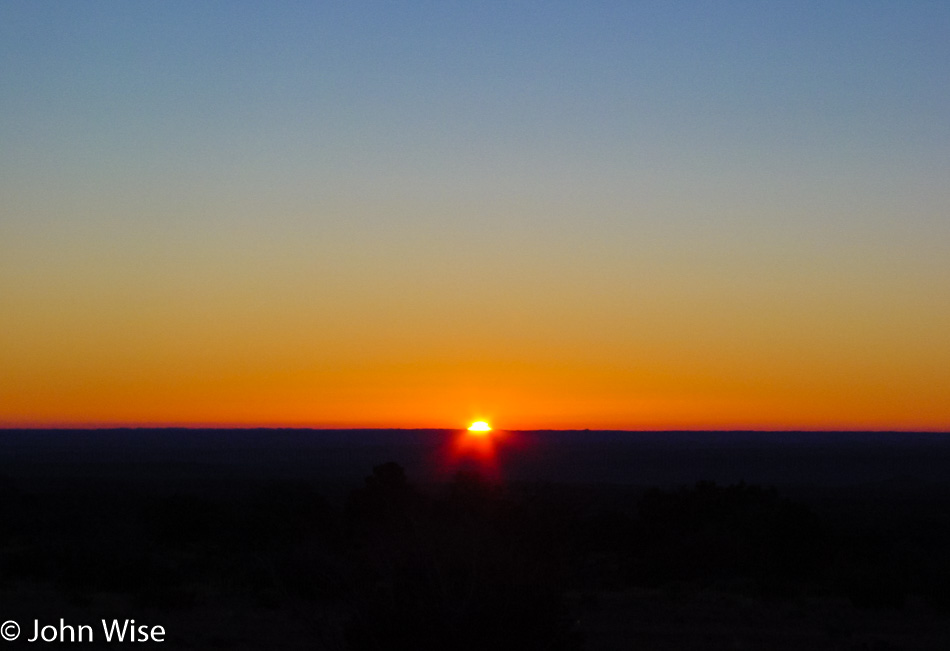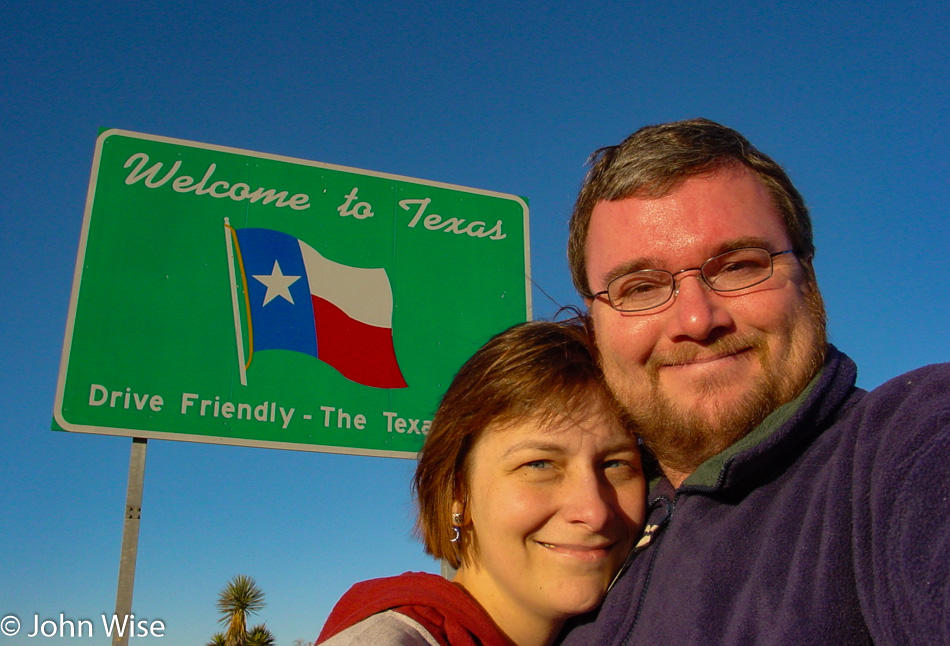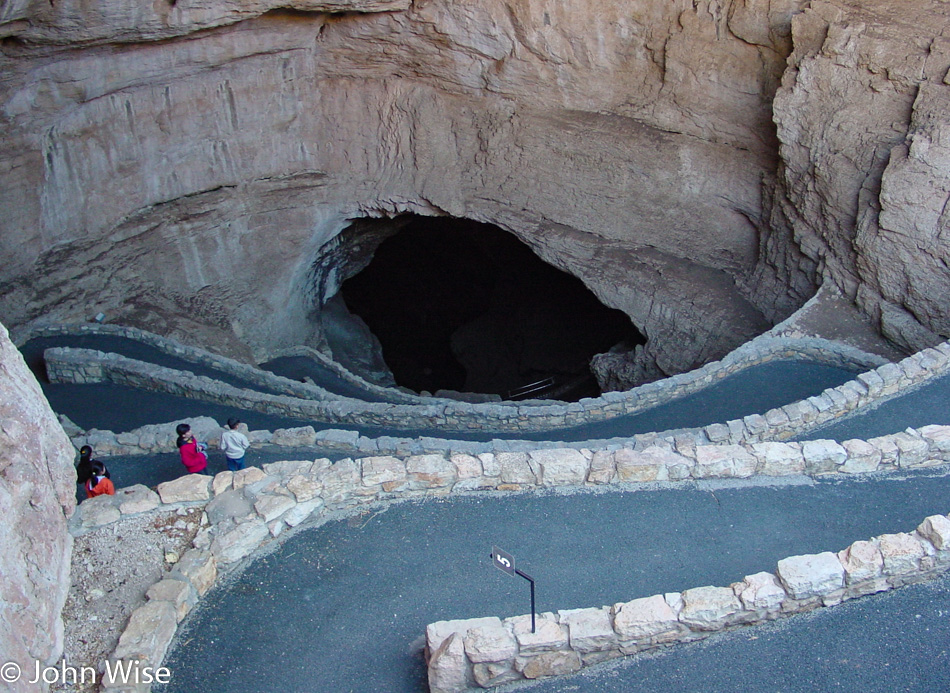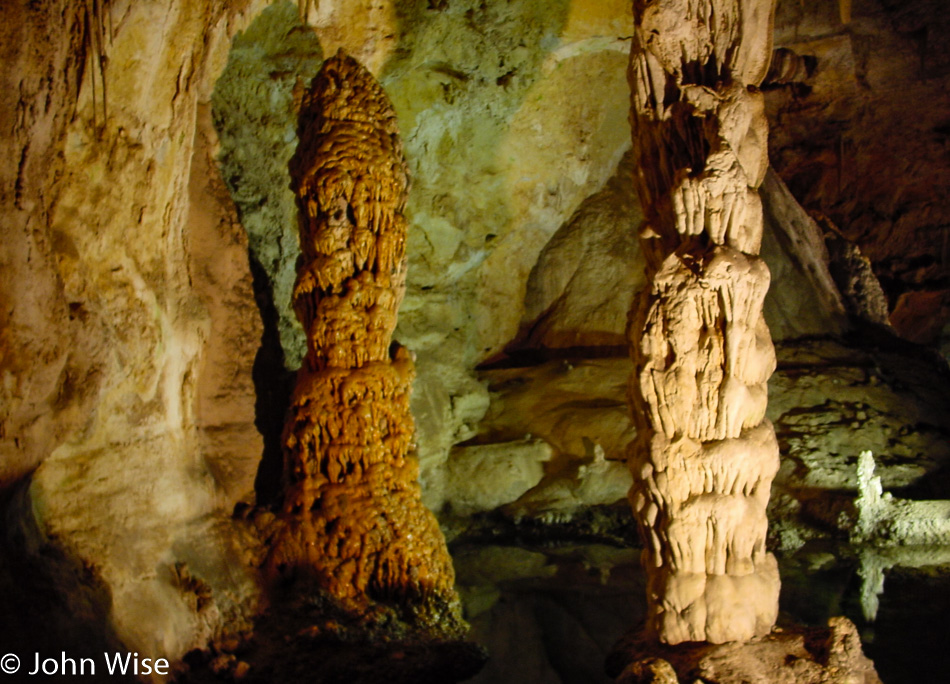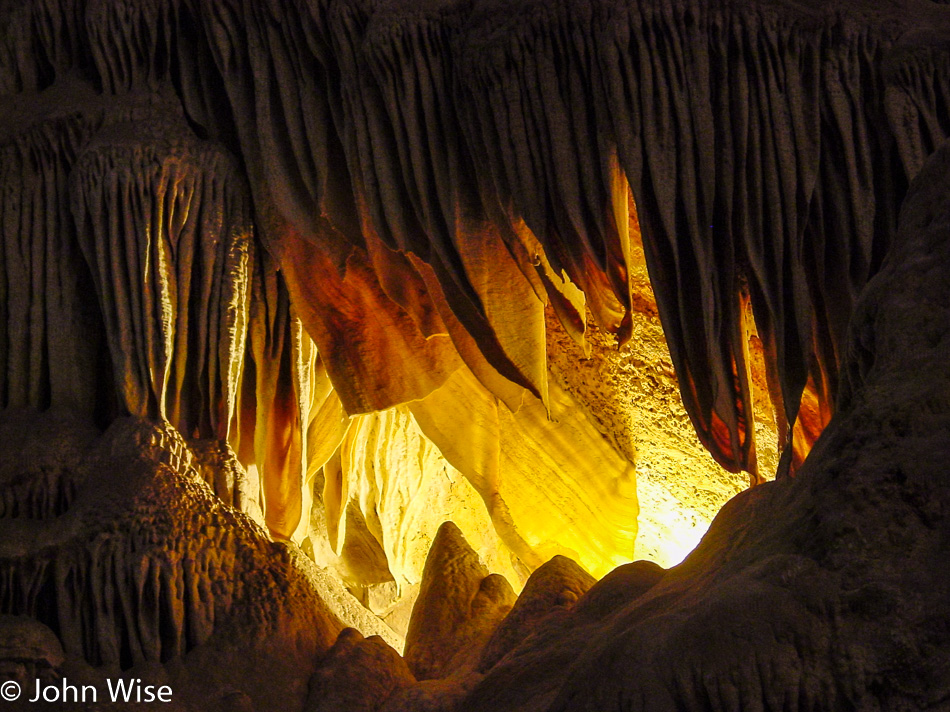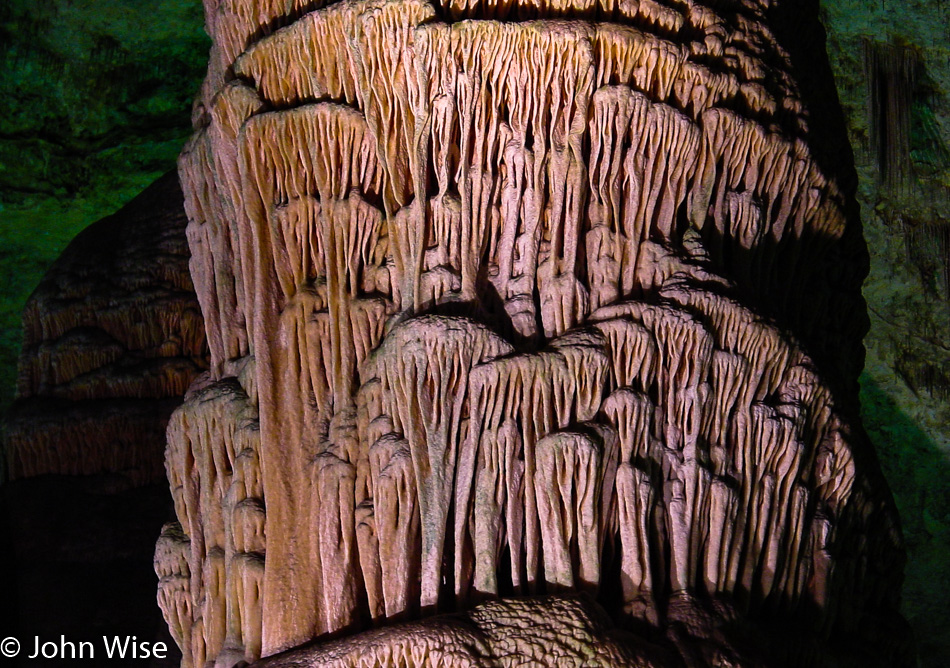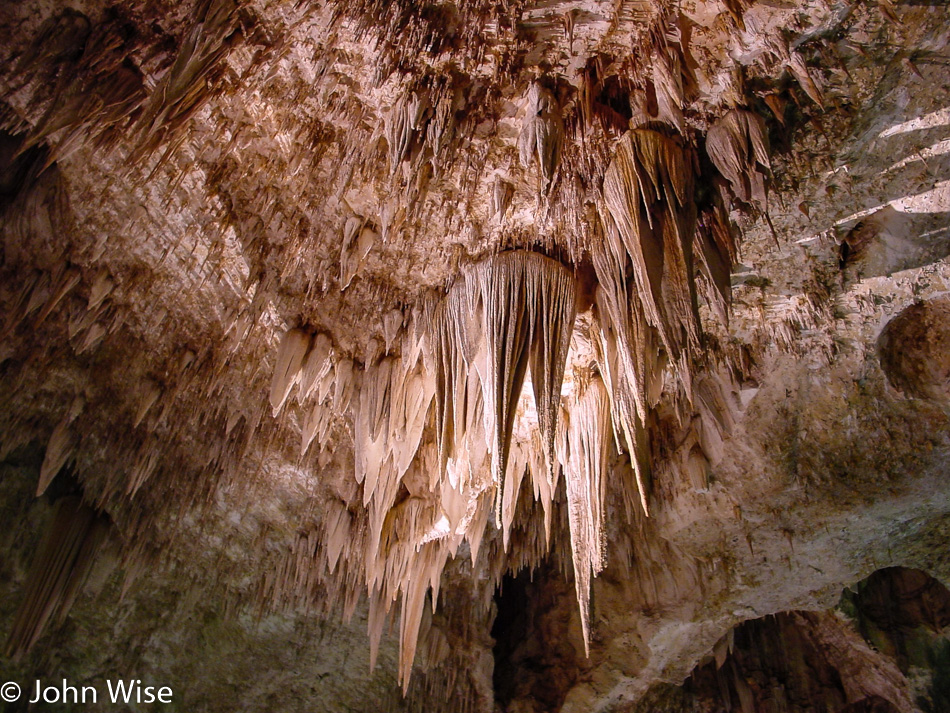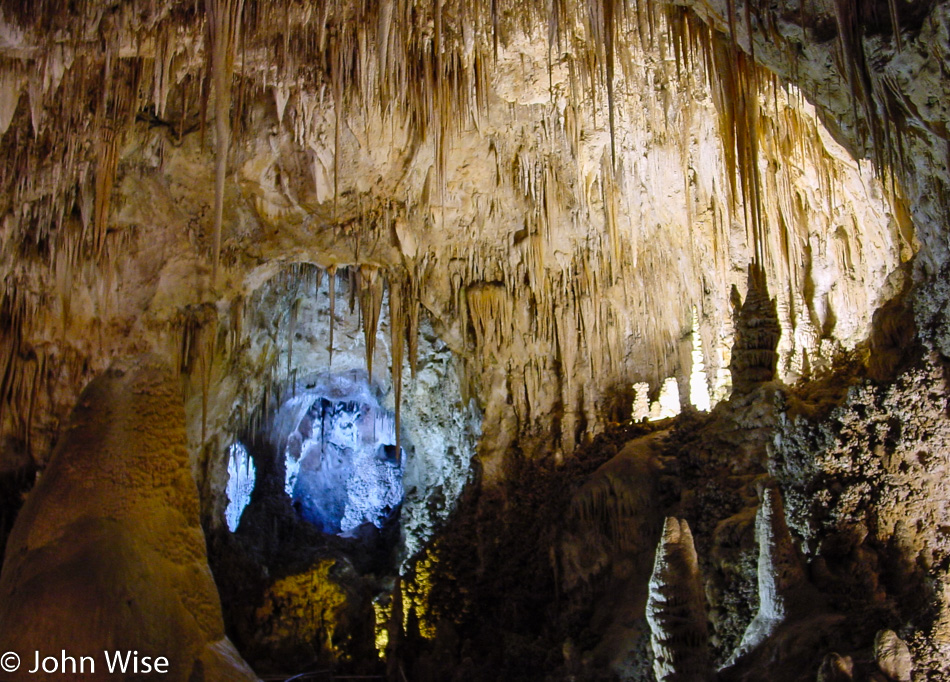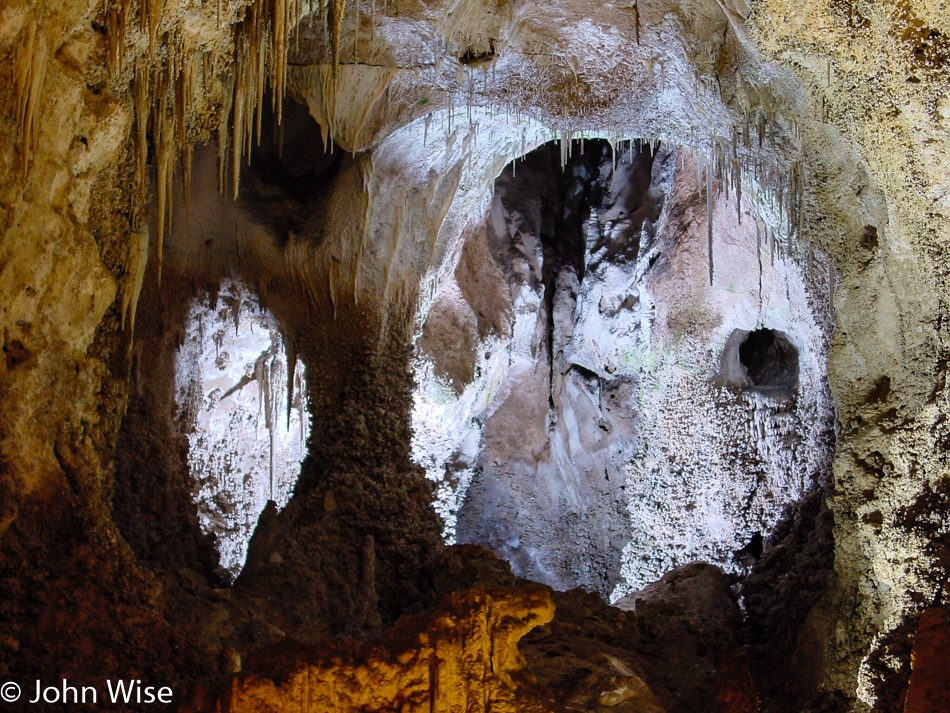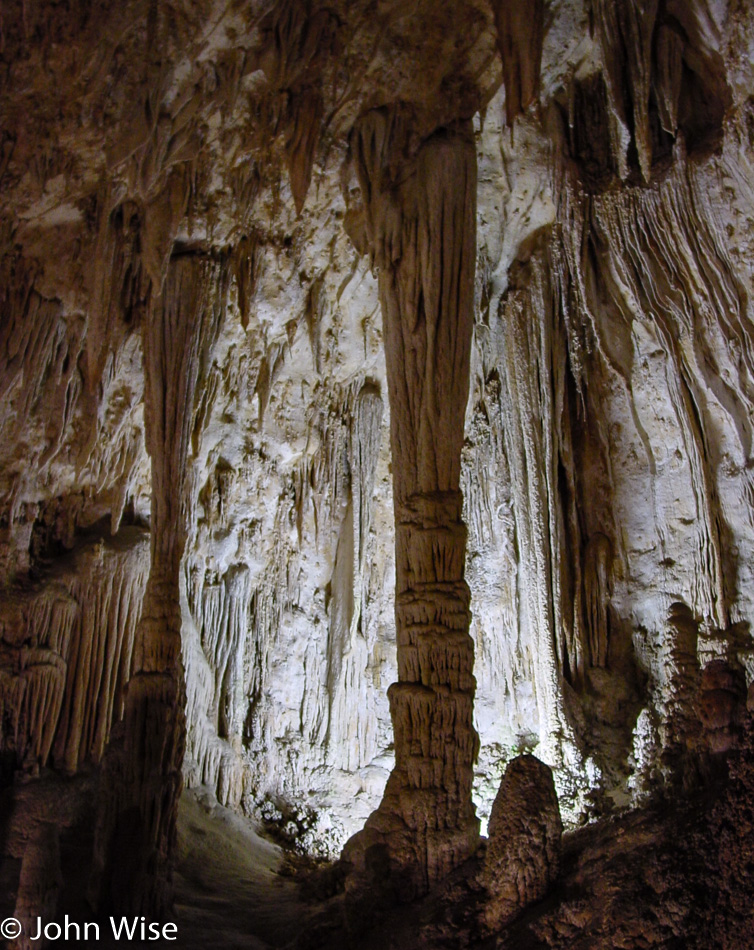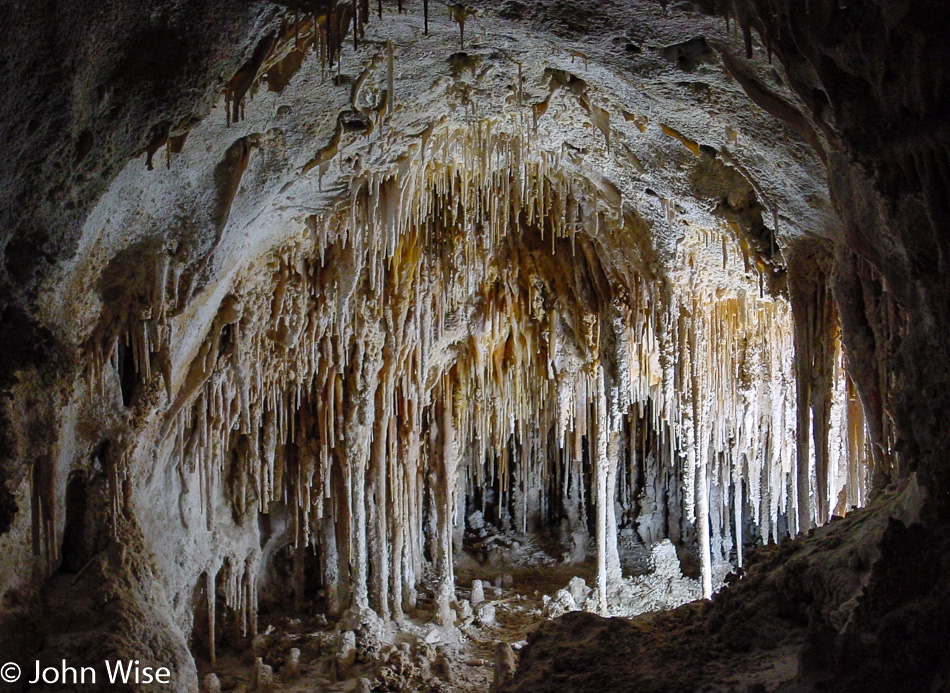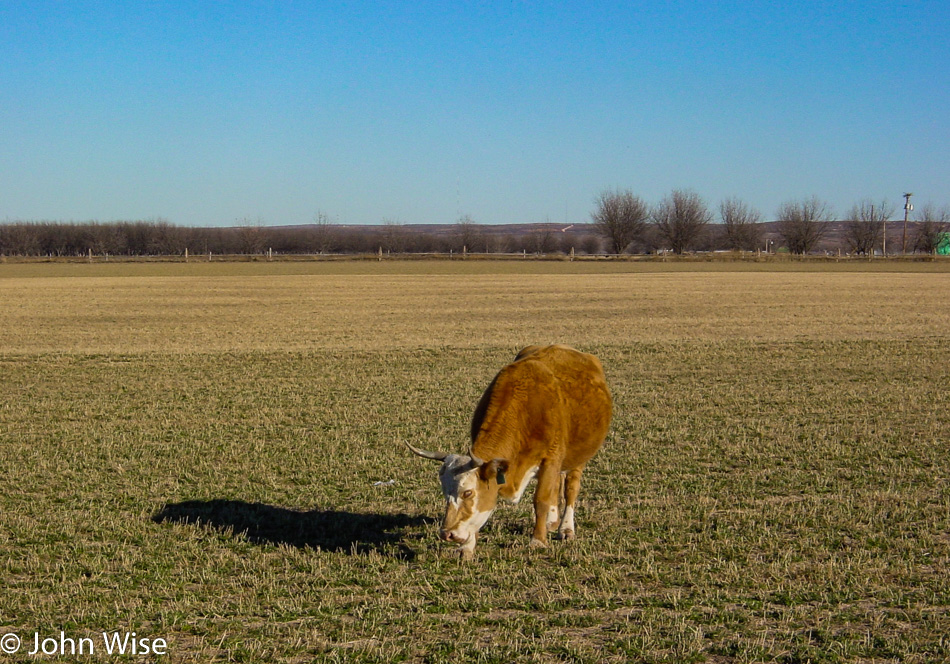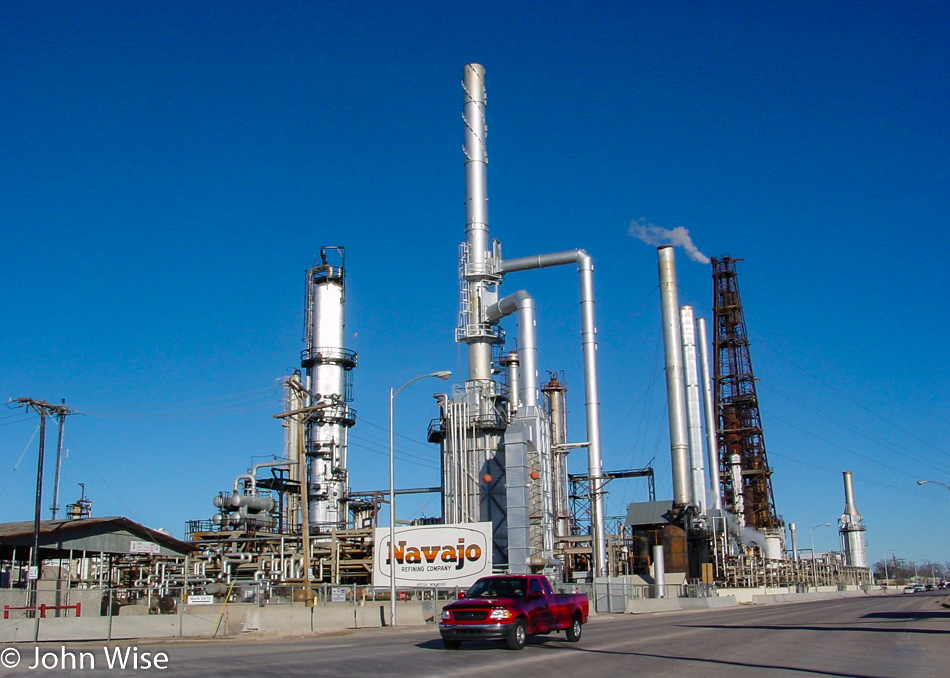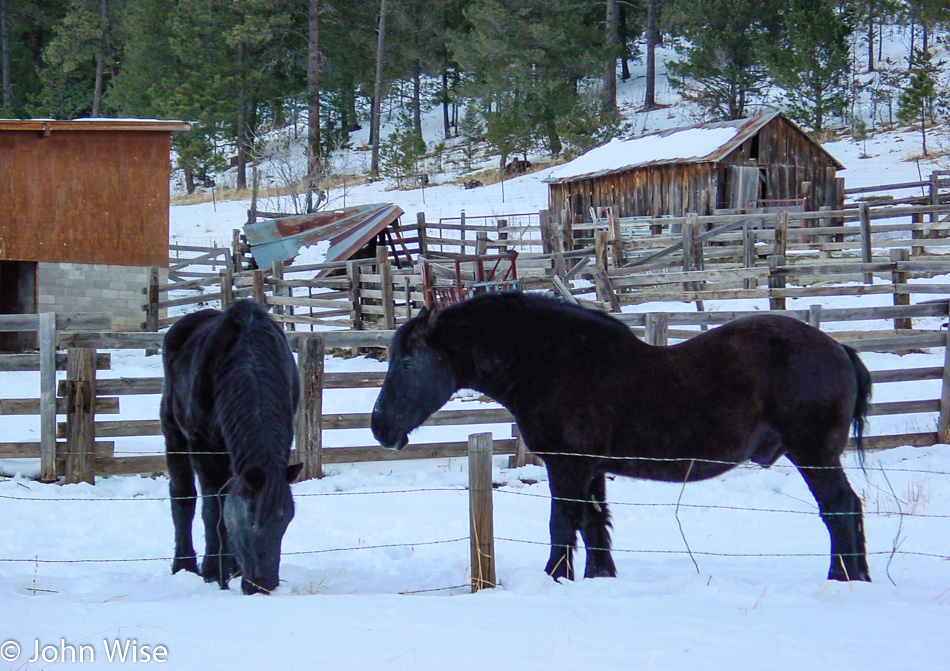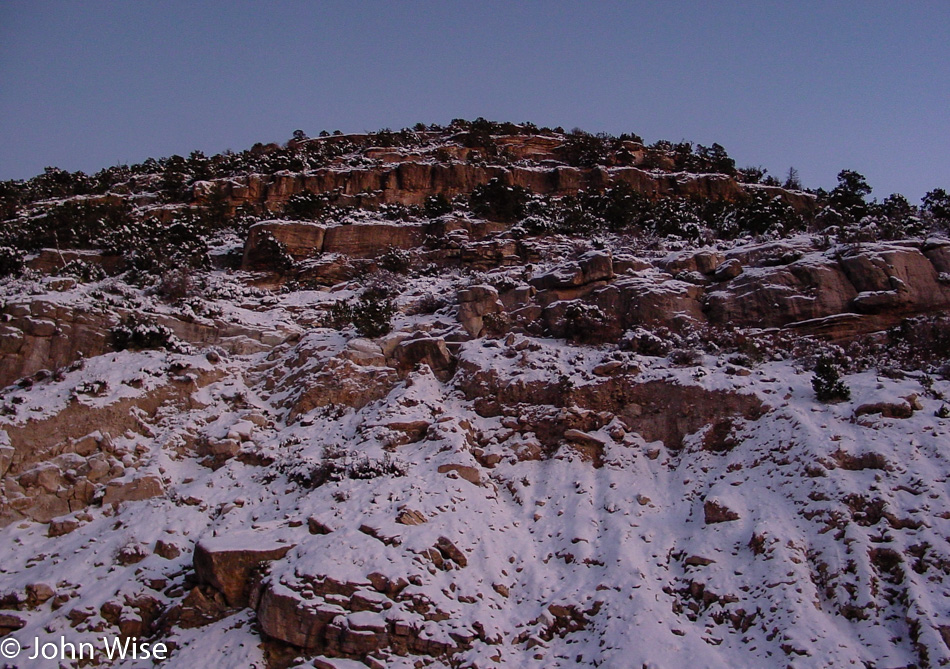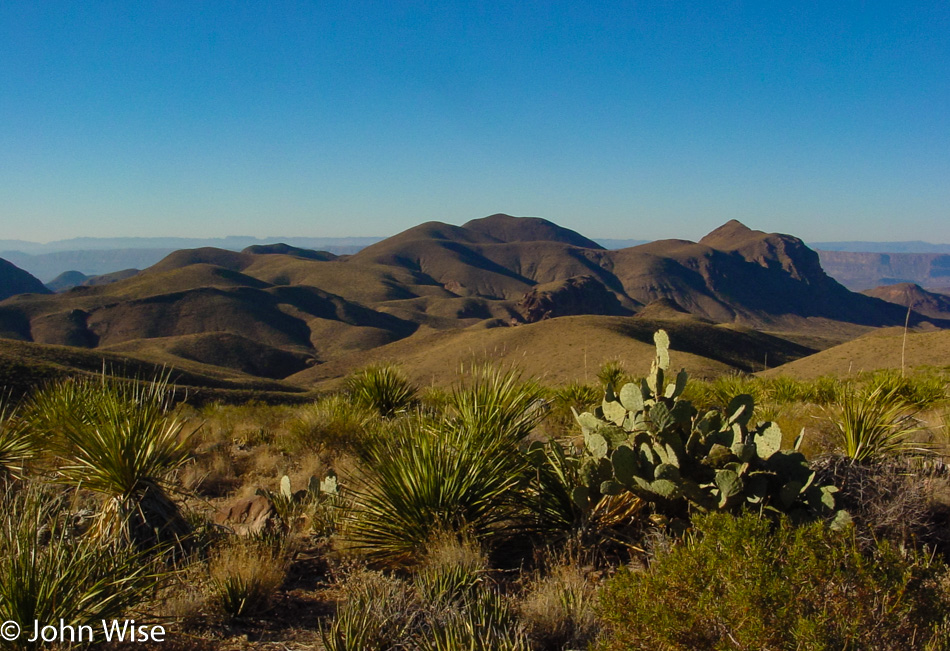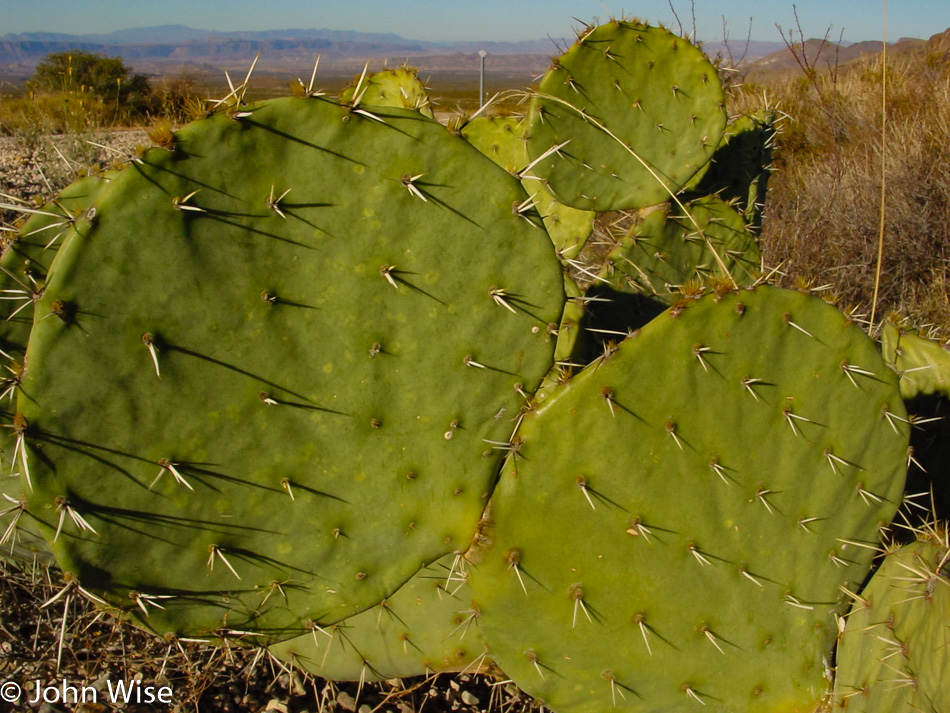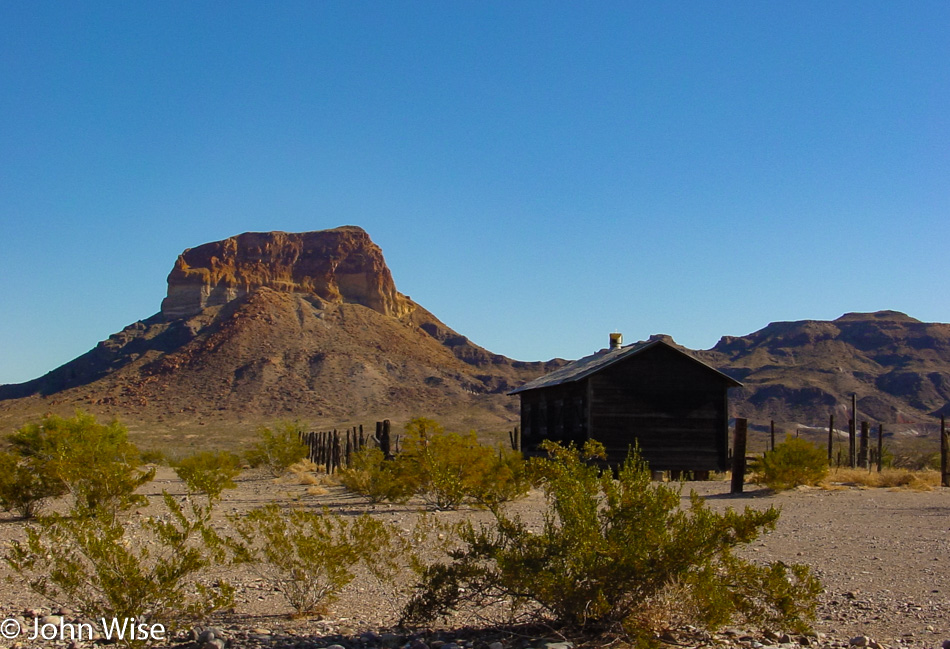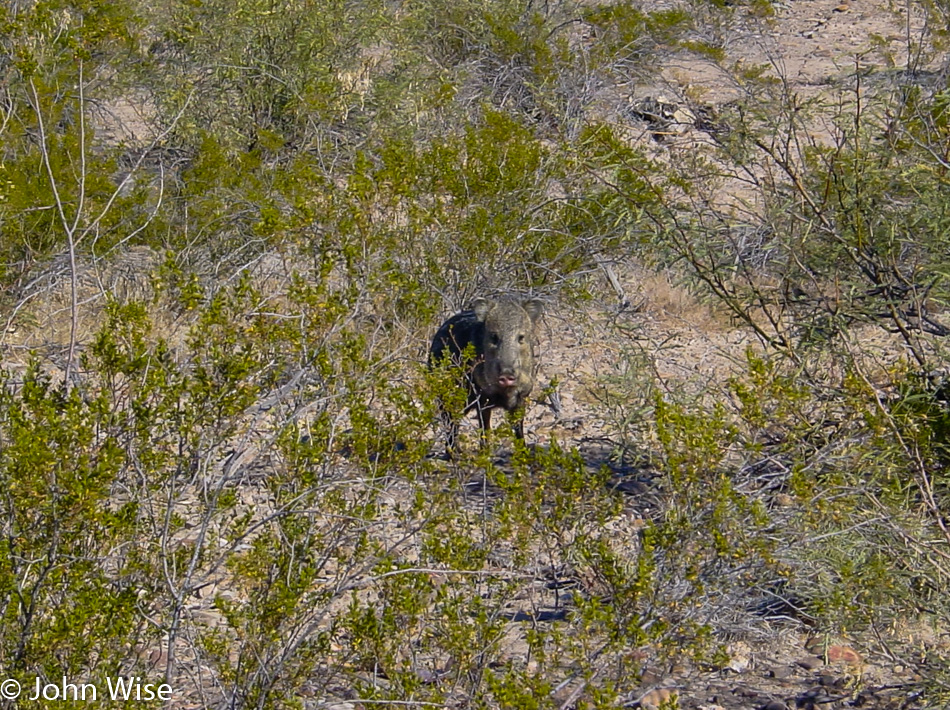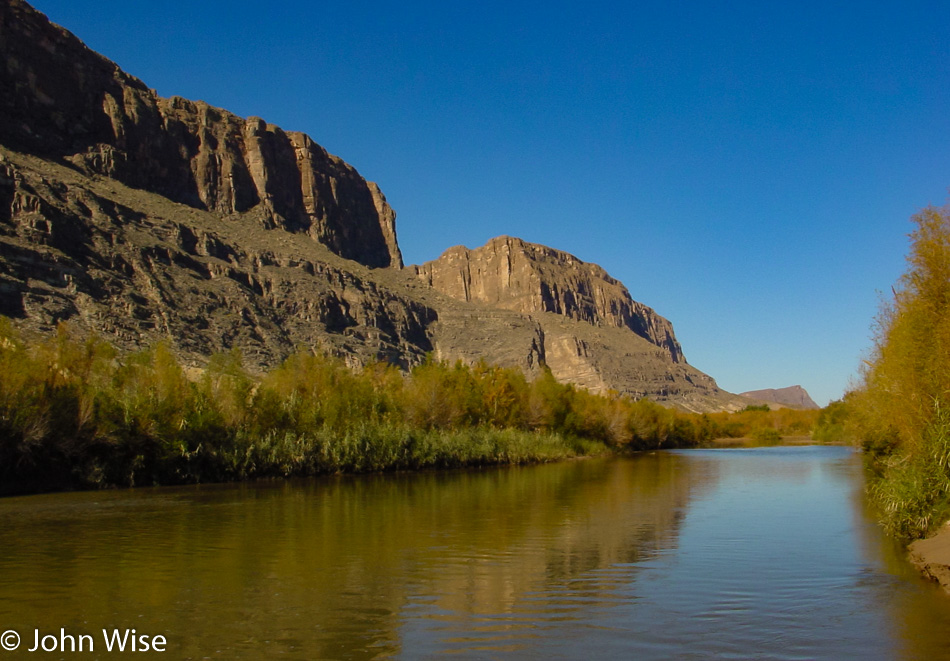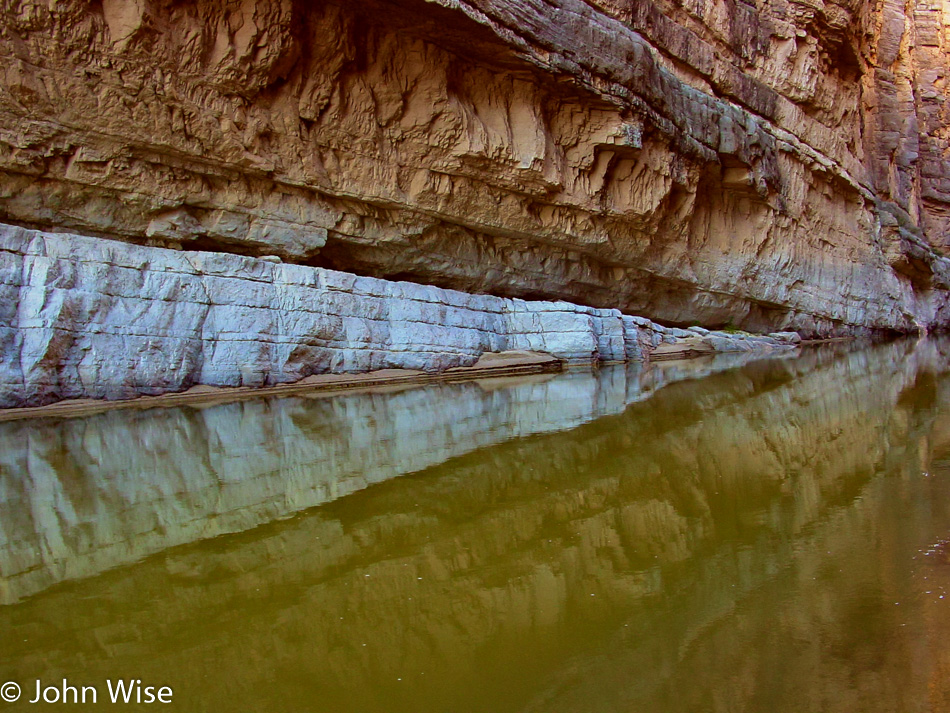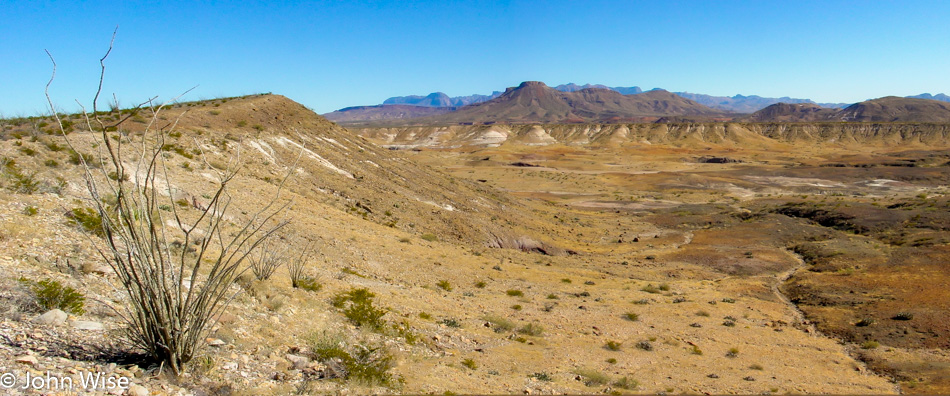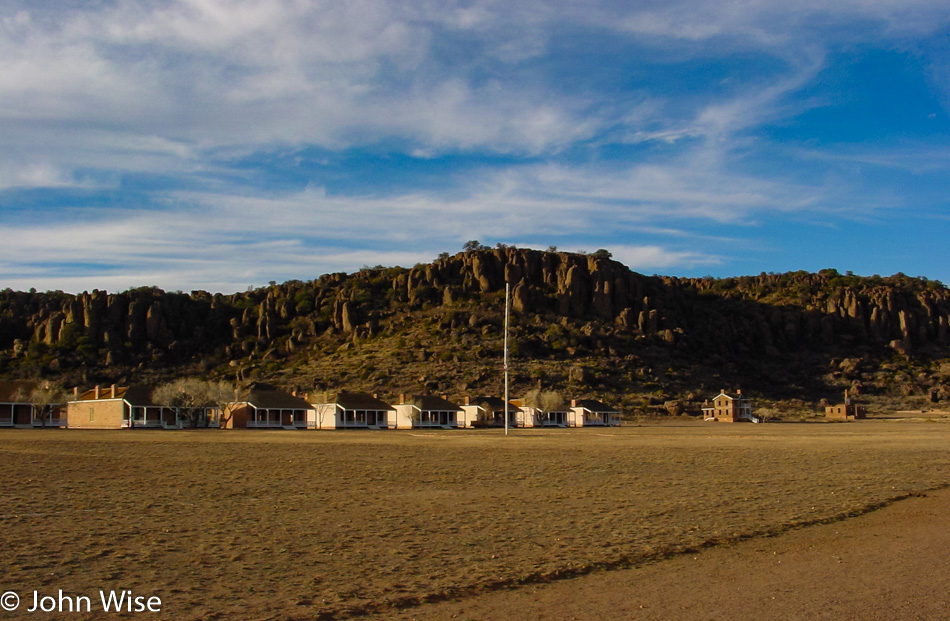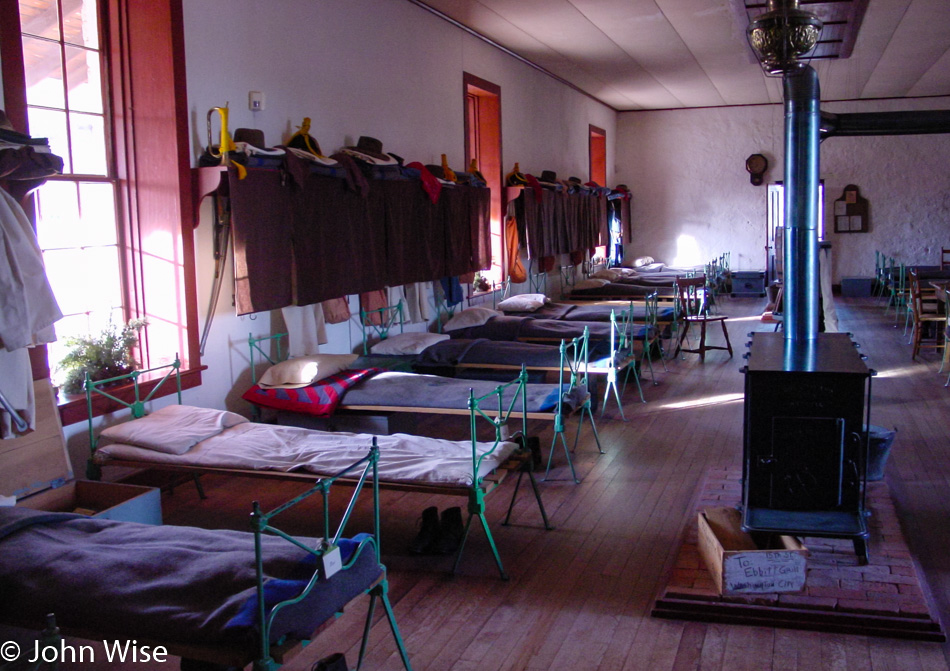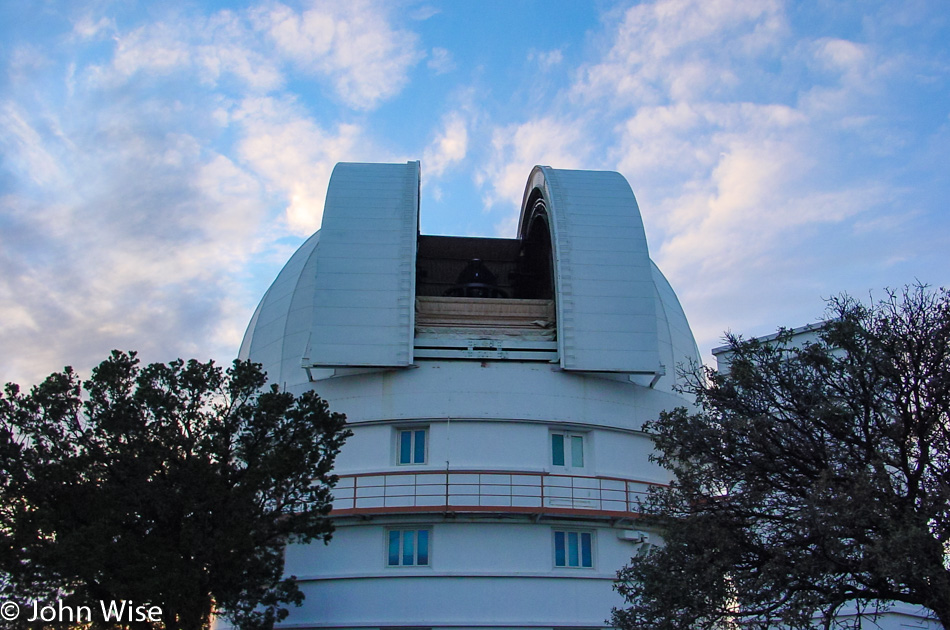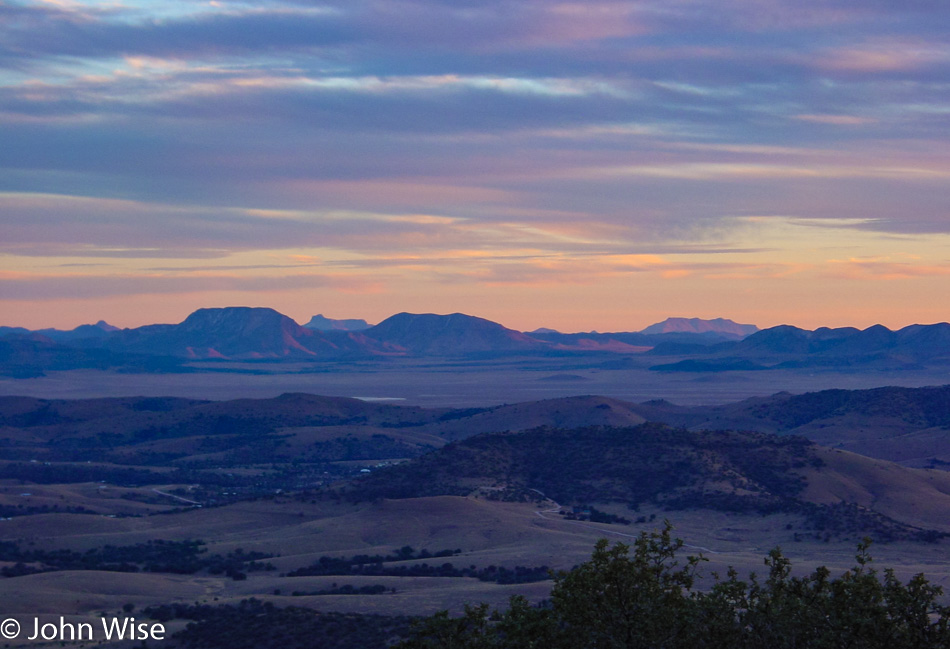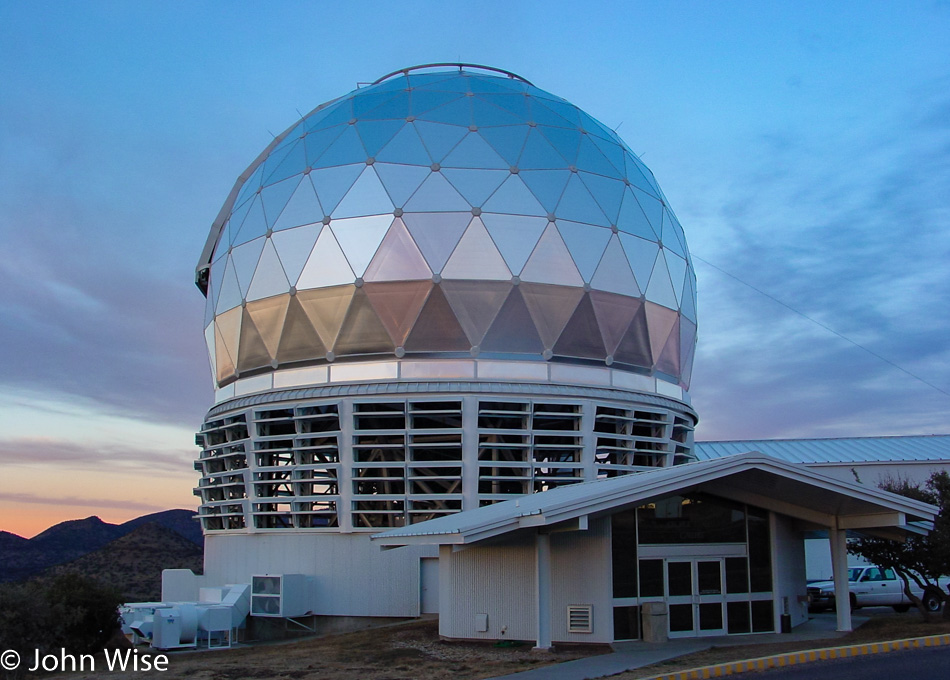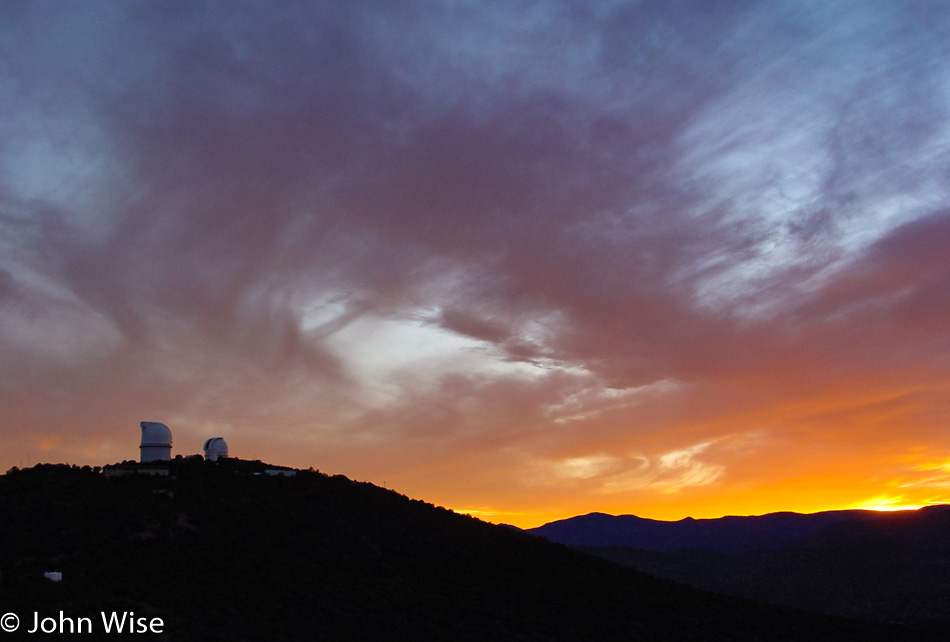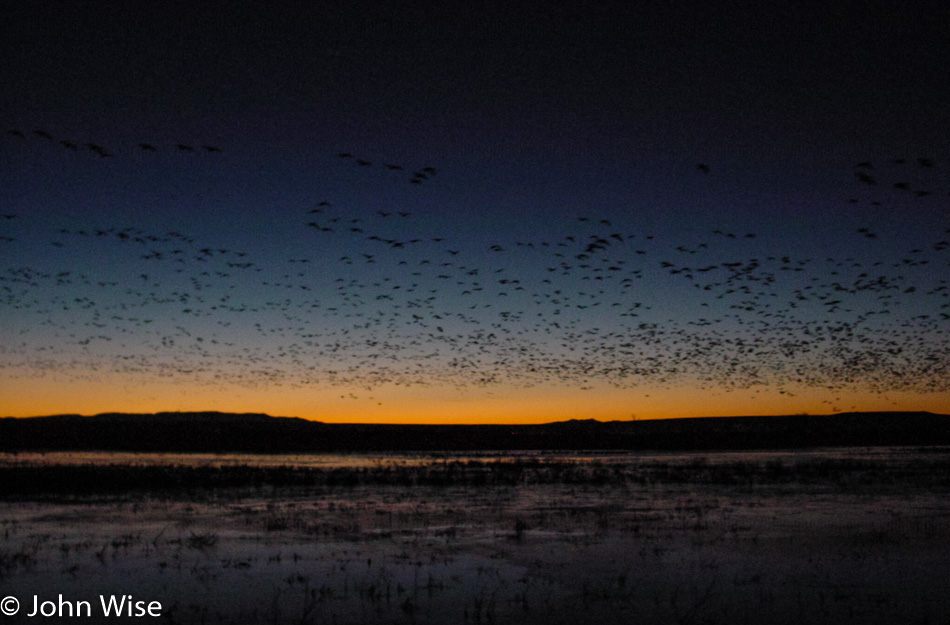
It was 16 degrees (-9 Celsius) when we left Carrizozo two hours ago at 4:00 and it’s not much warmer when we reach the frozen lake here in the Bosque del Apache Wildlife Refuge. There are about two dozen of us out here braving the cold, and some came prepared for photographic battle with professional gear at the ready.
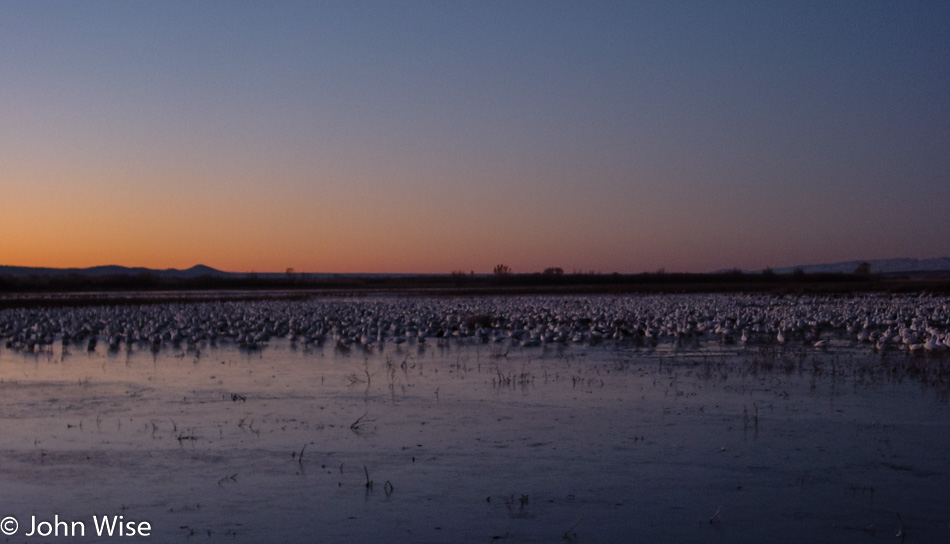
The geese that were flying in joined others camped out on the ice not a hundred feet from us. And so we wait and wait. Occasionally, it gets really interesting out there in Bird Village, but first, some observations. Most of the birds are sleeping with a sentry standing guard over maybe 4 to 6 other birds. The awake birds are chattering across the colony, apparently relaying messages of some sort. Then, from within the cacophony of the squawking, a single bird word appears to have been said, and the entire group goes silent. The sleeping birds do not stir, and after a moment, another call goes out, and the guards start talking again. This happens a few times over the next hour while we humans wait, oblivious to their language. And then a special call was made where not only do the guards fall silent, but all the sleeping birds stand up with a whoosh and they too are silent.
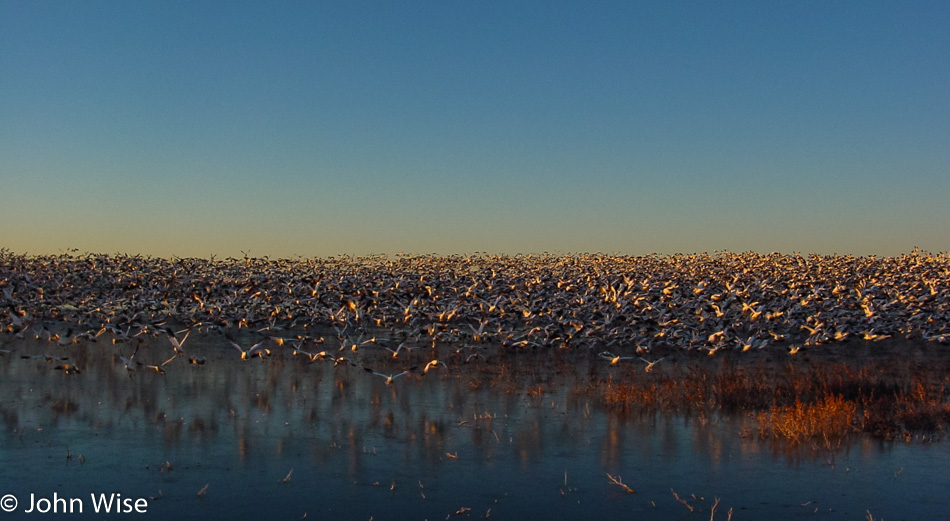
With a call nearly lost in the crush of sound, it appears that all 30,000 birds lift off simultaneously, ready to scatter to the wind. Our breath was taken away by the dramatic sight of a sea of geese flying directly at us.
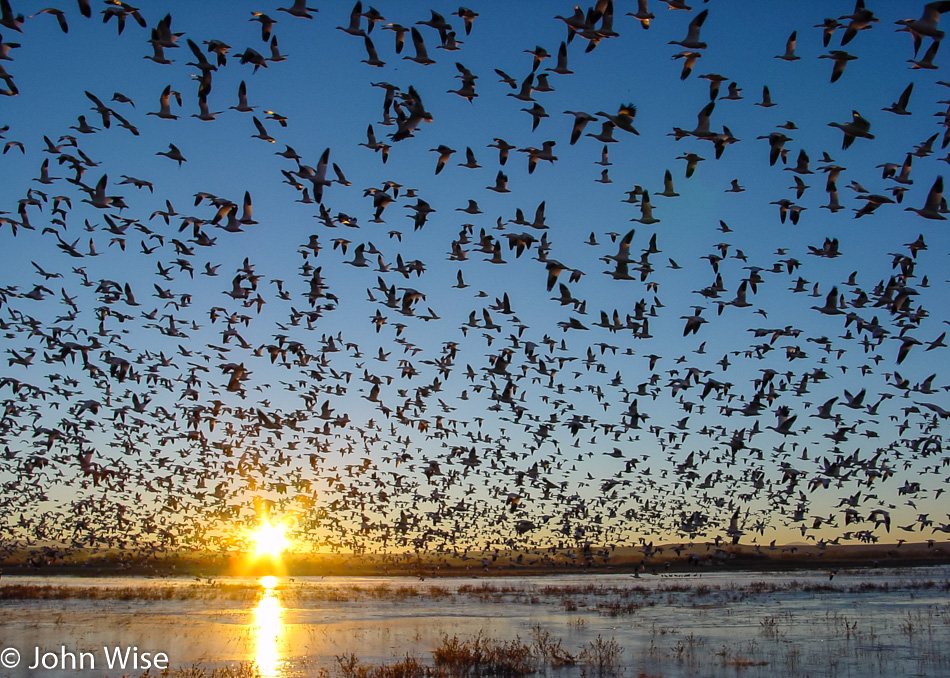
And then the tear ducts were opened as those rapidly accelerating geese flew overhead, their flapping wings thrashing loudly through the air as they quickly gained altitude. I don’t believe anyone had a dry eye who witnessed this. To say it was astonishing is an understatement because not only was it a sight for the eyes, but it was an experience for the ears, the heart, the mind, nature, and the wonder generated by this coordinated effort of the geese to act as one giant cohesive entity.
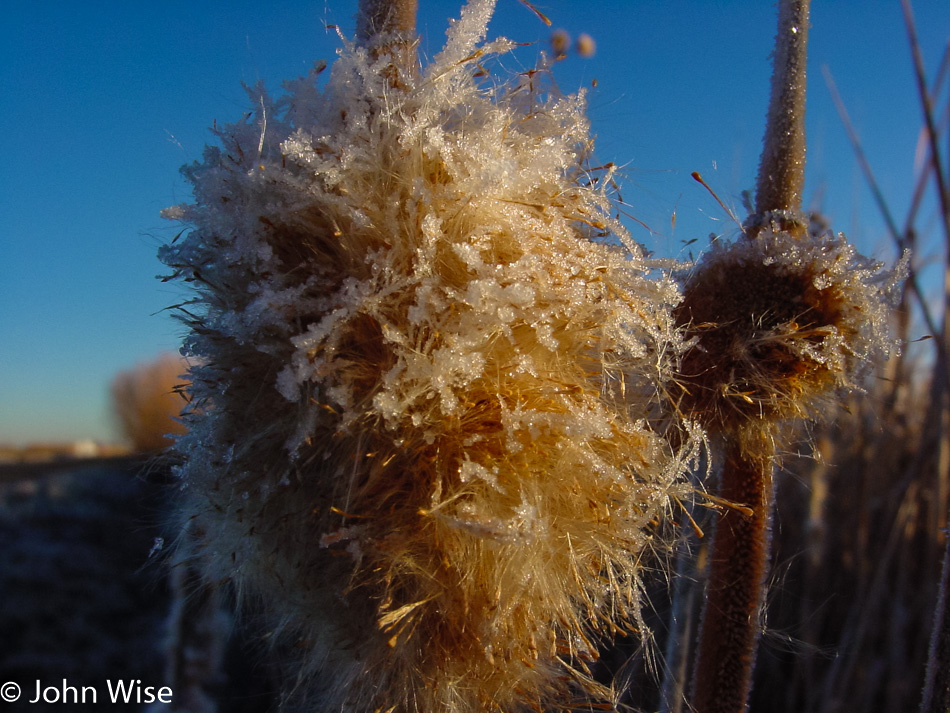
It’s still seriously cold out here as we go to explore other corners of the refuge, but it has warmed up to 23 degrees or -5 Celsius.
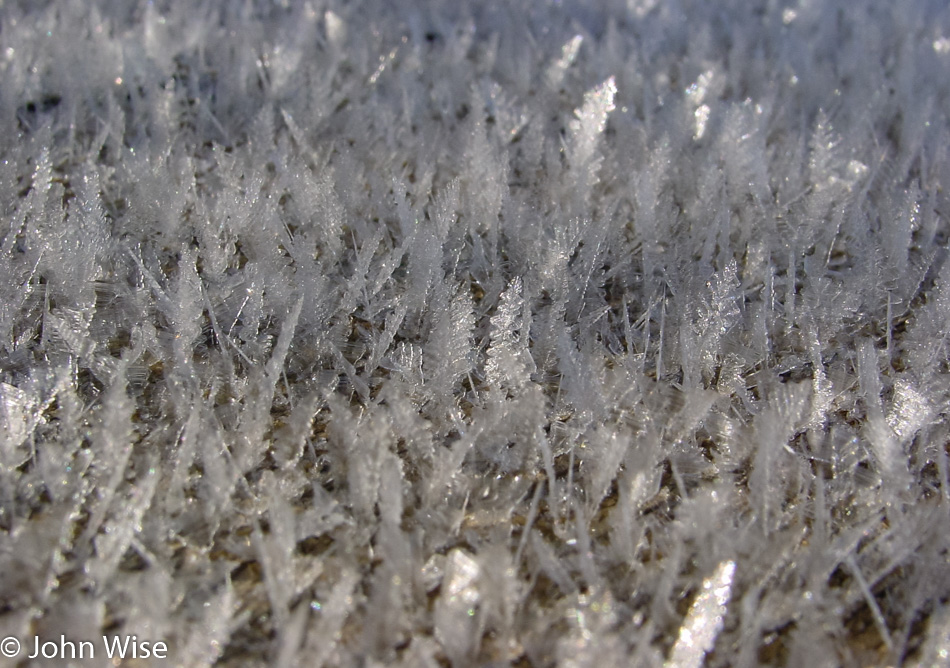
These ice crystals were growing out of the wood railing on a boardwalk. I can’t say that I’ve ever seen anything like this before.
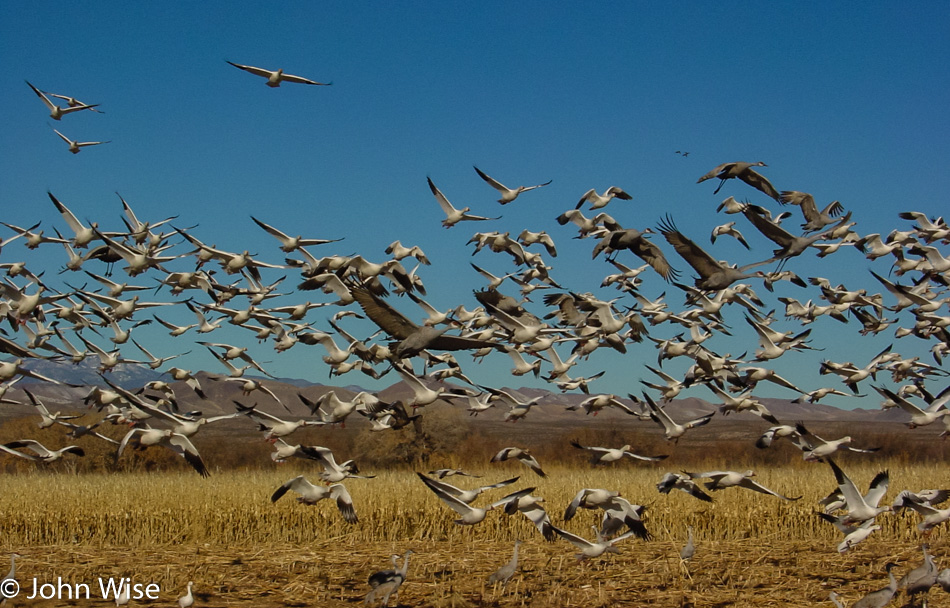
There are about nine sandhill cranes mixed in with these geese. In mid-November, there is a festival of the crane held here at the Bosque if you were so inclined to visit yourself.
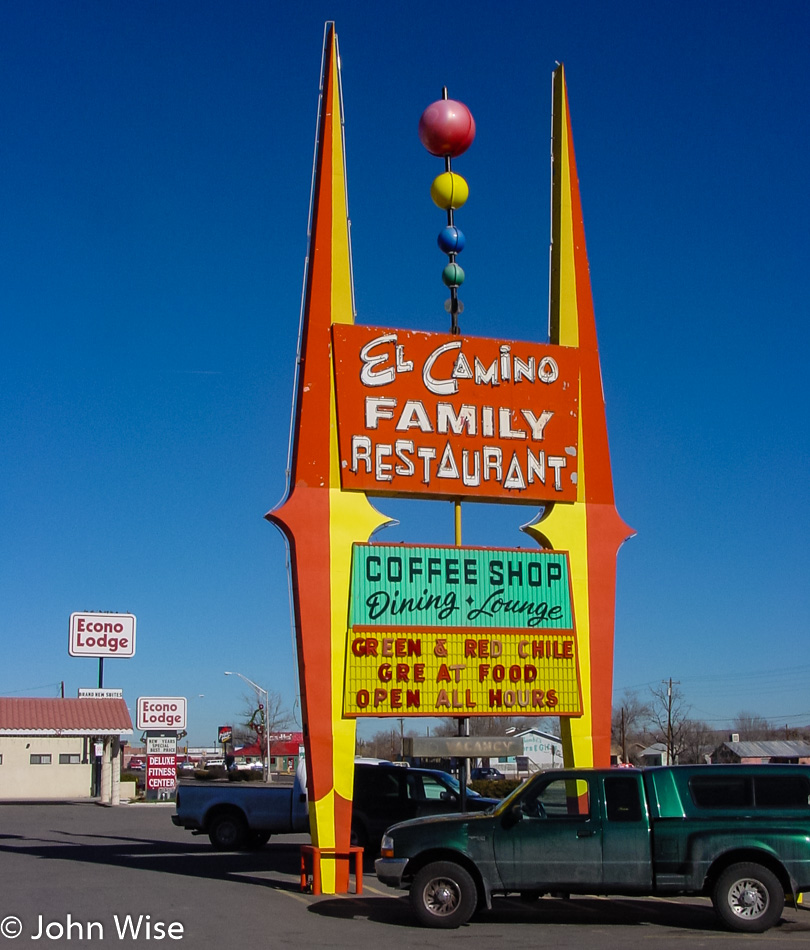
Time for some hot food to warm our cold noses, and nothing like some green chili to help accomplish that. We hope this joint called El Camino Family Restaurant in Socorro, New Mexico, never closes as it is one of our favorite restaurants in America, right up there with Oki Dog and In N Out.
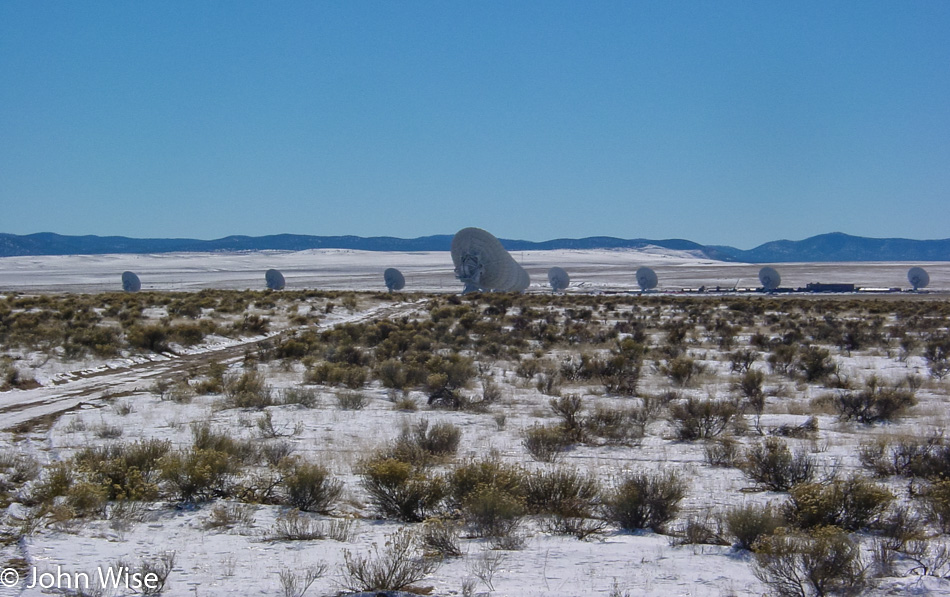
Last April, we passed through here on our way back to Arizona from the Trinity Site (click here to visit that post), and here we are once again, driving west through Datil, New Mexico, except this time, we get to see the Very Large Array (VLA) in the snow.
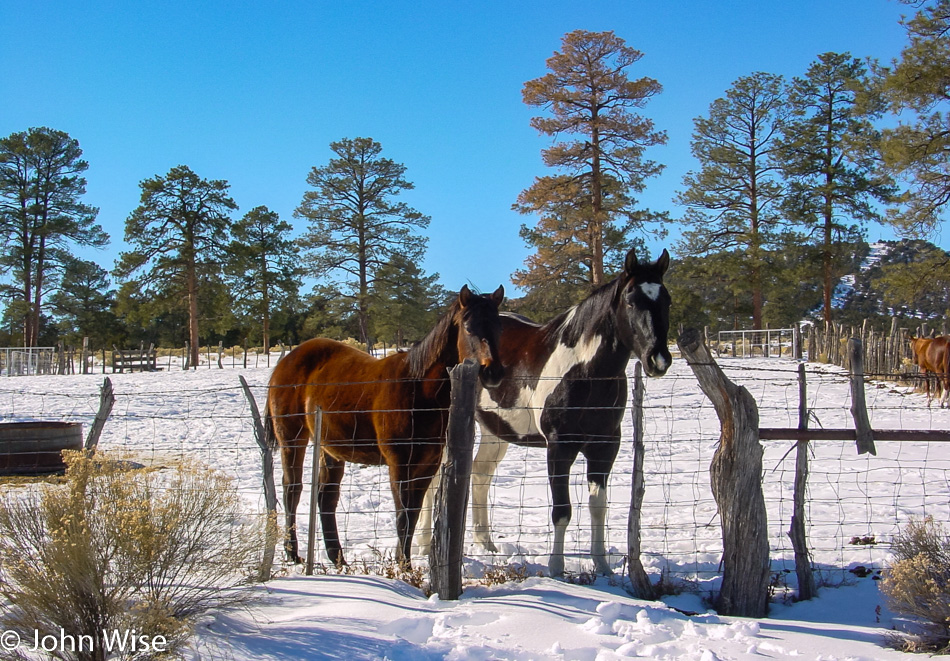
While again, we have driven through Pie Town, New Mexico, and not gotten to enjoy some of their famous pie; we do have this opportunity to say hi to these beautiful horses. Someday, we’ll pass through town when one of the two pie shops is open.
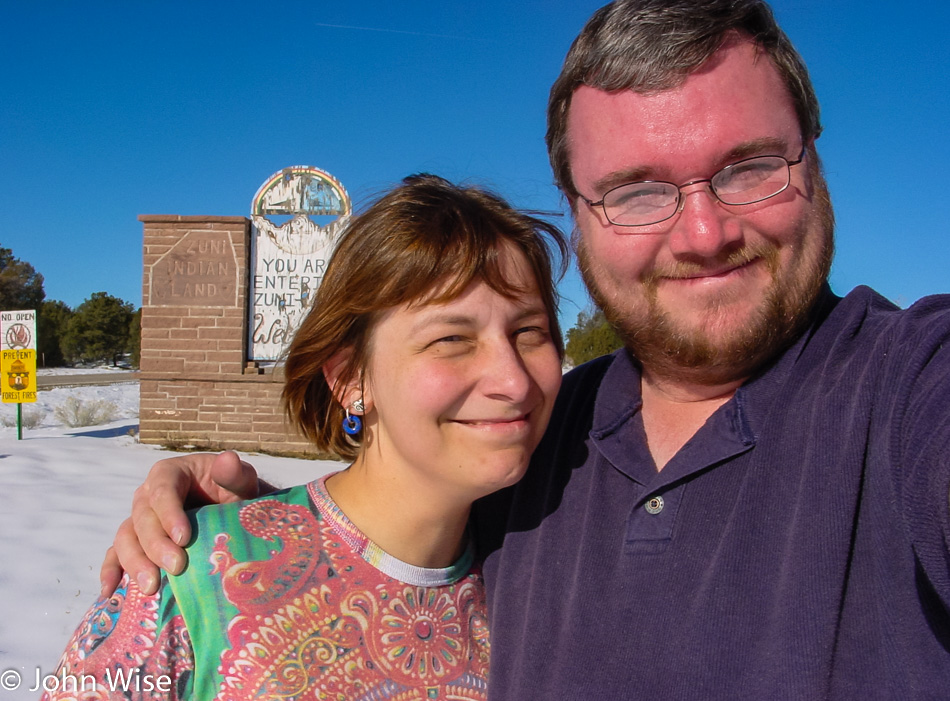
Getting this picture taken took a while and more than a few failed attempts due to the glare of the sun on the snow combined with the fact that we had to look in the general direction of the sun so we could have the “Welcome to Zuni-Land” sign behind us.
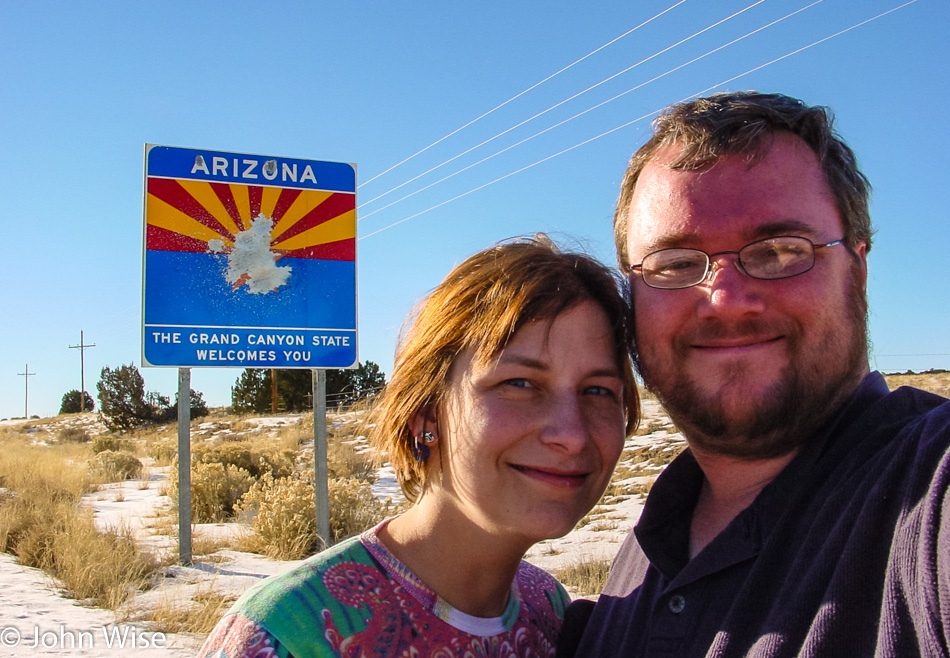
We are always amazed by the people who take the time to get out of a vehicle or just pull over so they can shoot at state signs. What the hell is wrong with people who are probably the very same people who complain about taxation and then go shooting up signs that probably cost about $1000 to replace?
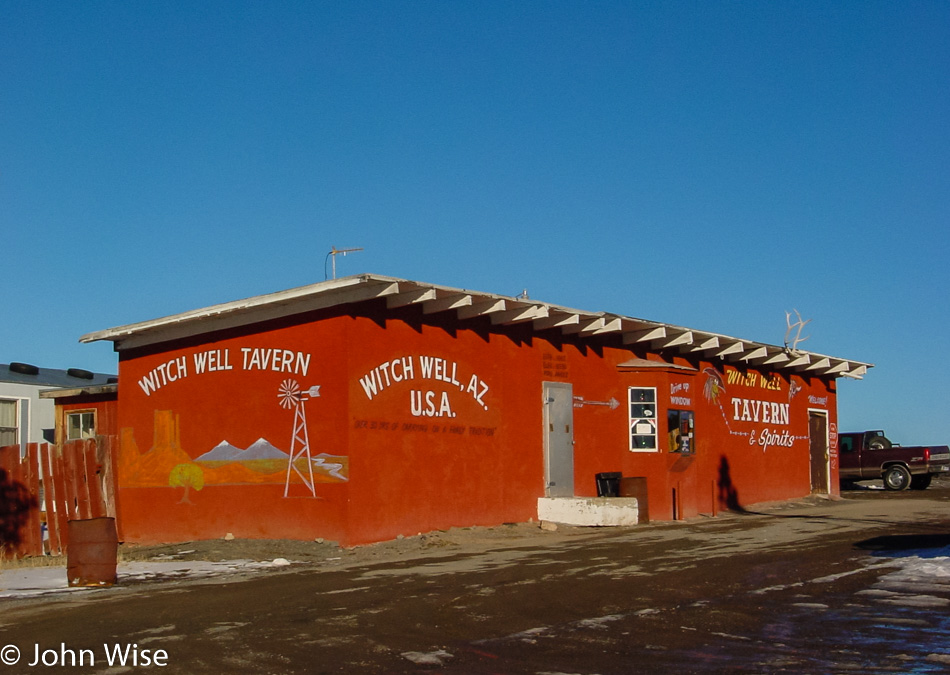
Couldn’t get pie, but it looks like we could get a shot and beer if we were so inclined here at Witch Well Tavern outside of St. John, Arizona. I did have the opportunity to talk with the owner, who told me his dad used to bootleg liquor out of this place back when he was just a pipsqueak, so Witch Well has been in business a good long time.
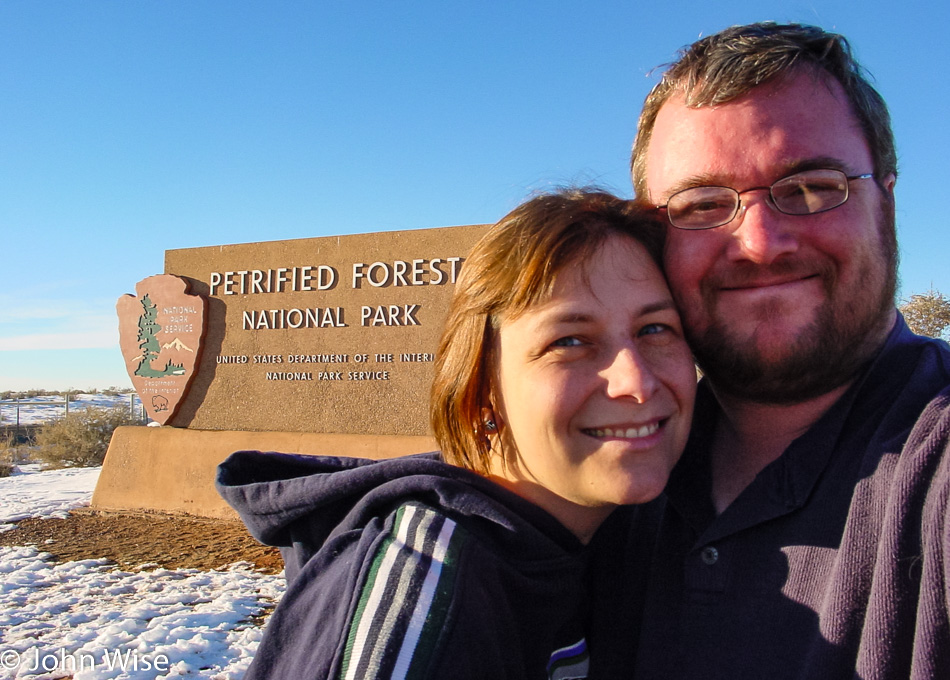
Wow, the opportunity to see the Petrified Forest in the snow was another lucky day among the many.
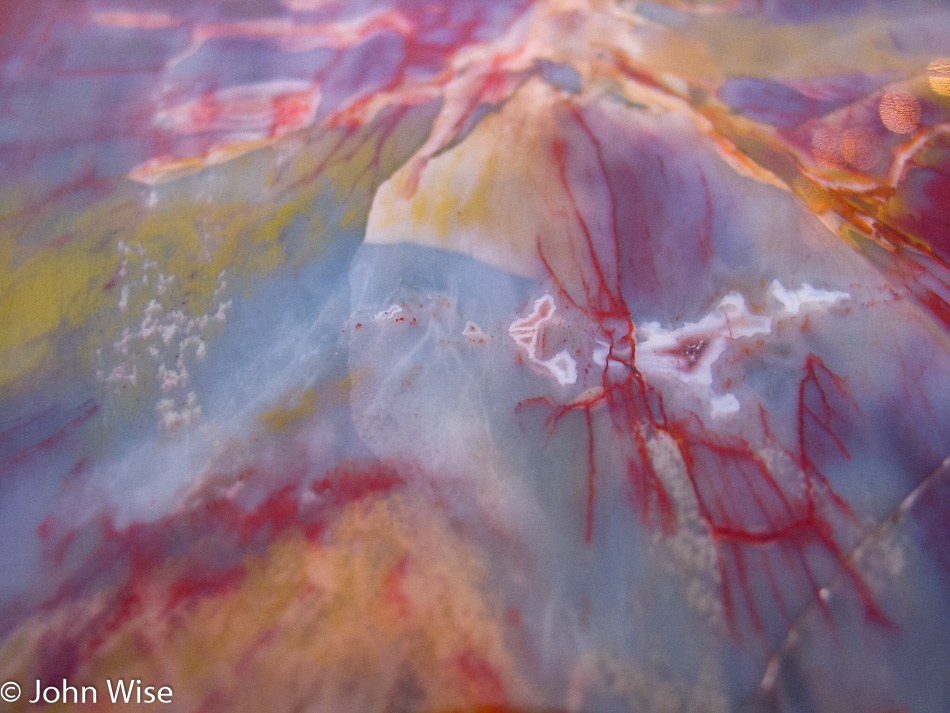
It’s easy to get lost looking at the vast scenery of the Painted Desert. Then there are all these logs turned to stone, and from a distance, they just look like fallen trees. Look closely and you’ll find those places where the wood not only turned to stone, but the minerals they absorbed turned them into art.
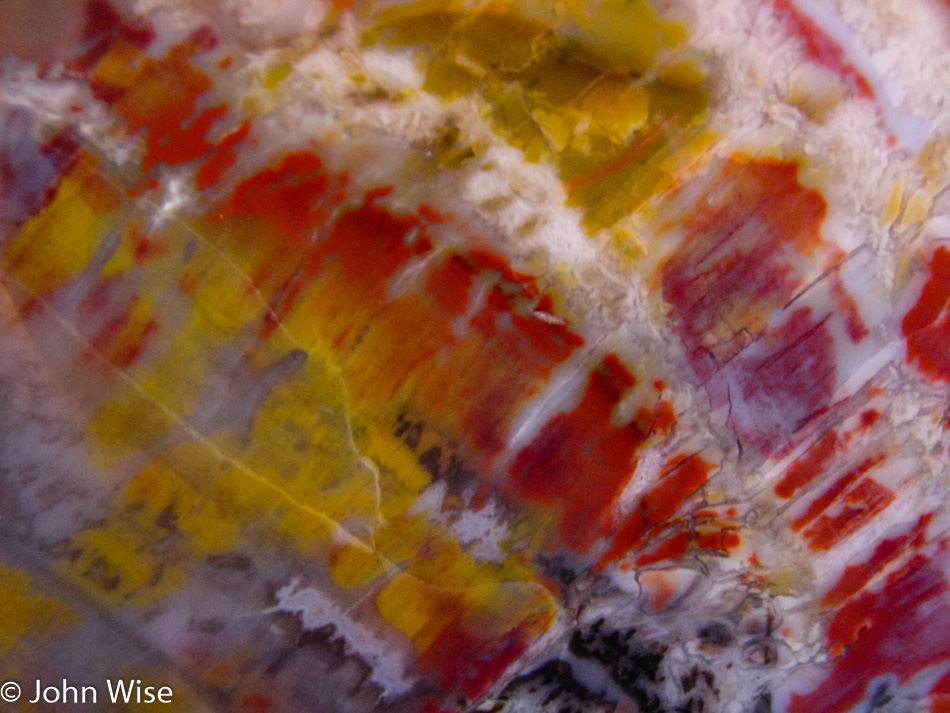
No wonder this stuff was coveted, and for years, before laws tried to prohibit the trade of giant slabs of petrified wood, people would steal the stuff and make it into everything from dining room tables to wall clocks. While some who read this might like that idea, the problem is there’s a very limited supply that was ever created by chance and a very long passage of time. If it all went to the highest bidders, there’d be none left for us to ogle here in the Petrified Forest.
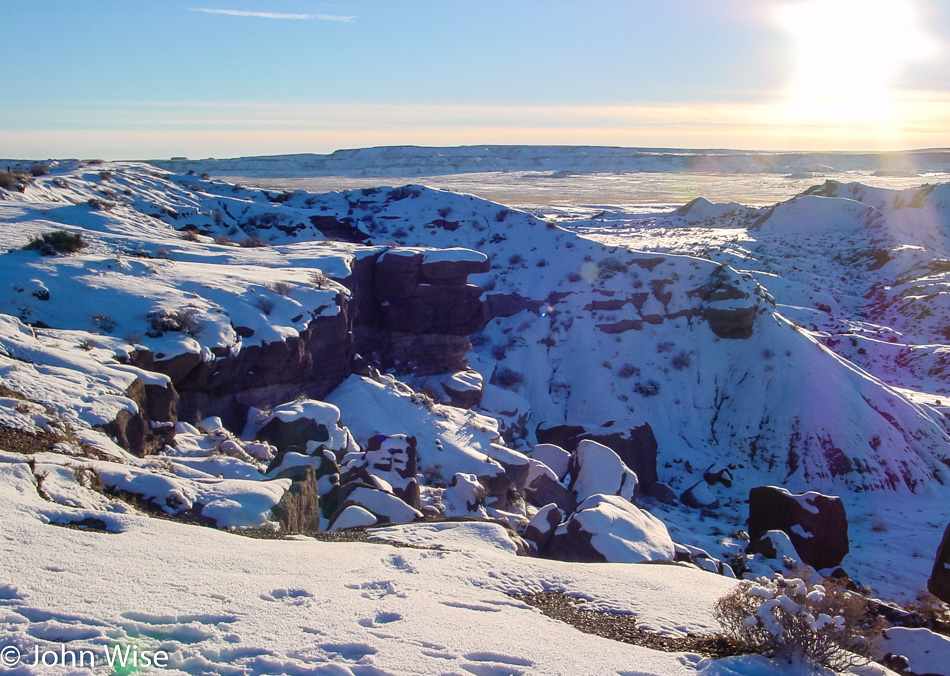
The difference a few inches of snow makes to this high desert landscape is extraordinary, and we still can’t believe we are here on one of the rare days when it’s covered in white fluffy stuff.
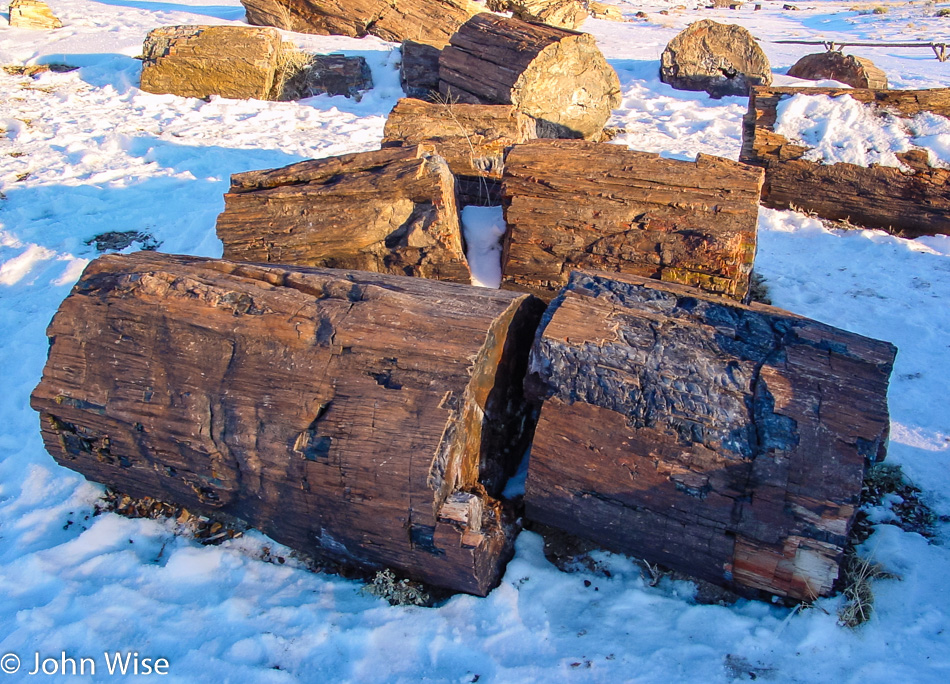
At first blush, it hardly appears that these trees look a day over a couple of thousand years old, but in fact, they are 225 million years old. Back when these trees were still standing, it wouldn’t have been impossible for a dinosaur to walk right by or maybe even crawl up one to grab lunch. There have been nine species of trees identified here in the park and all of them are now extinct.
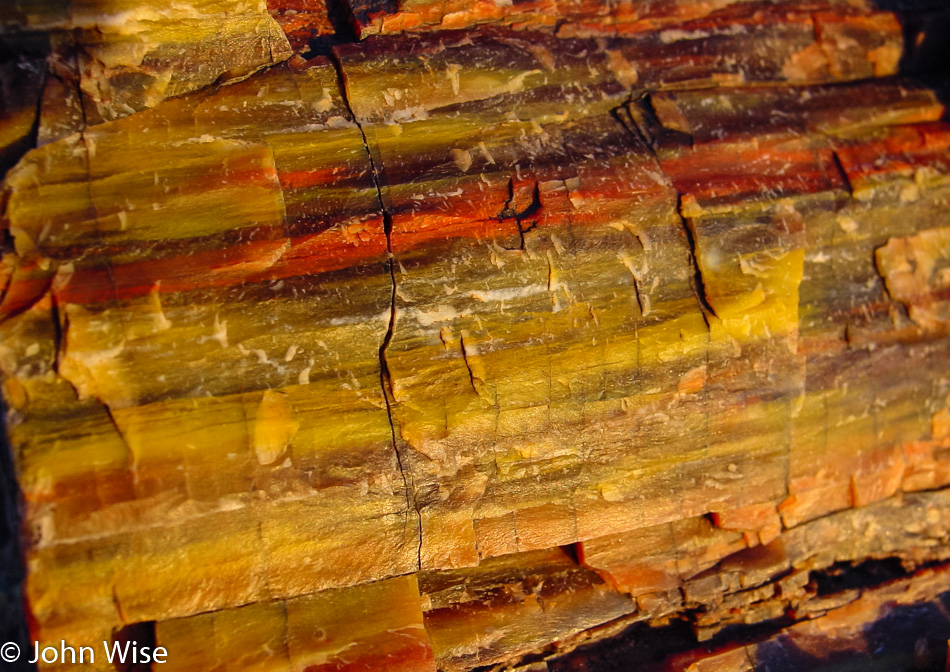
Remember that this area is known as the Painted Desert. Look around you; this is the Chinle Formation. Minerals by the bucket load were deposited here by rivers that brought silt, sand, and mud of various makeups that are responsible for the color of the earth. It is those minerals that began to transform the logs that were trapped in the mud.
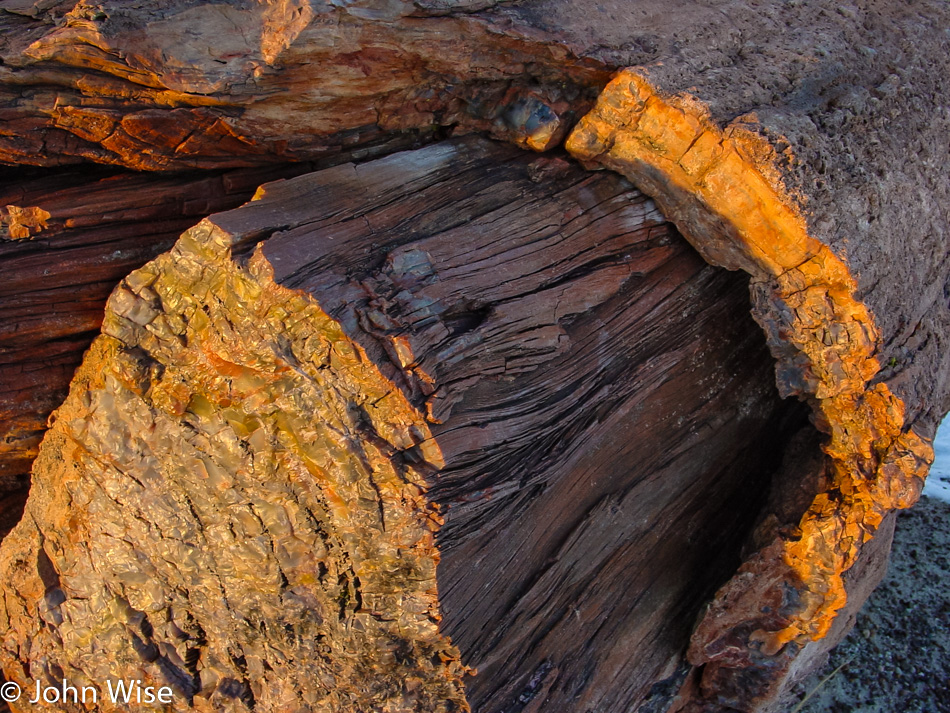
How did early people see these trees that had turned to stone? How could a primitive mind begin to decipher what kind of magic was at work here?
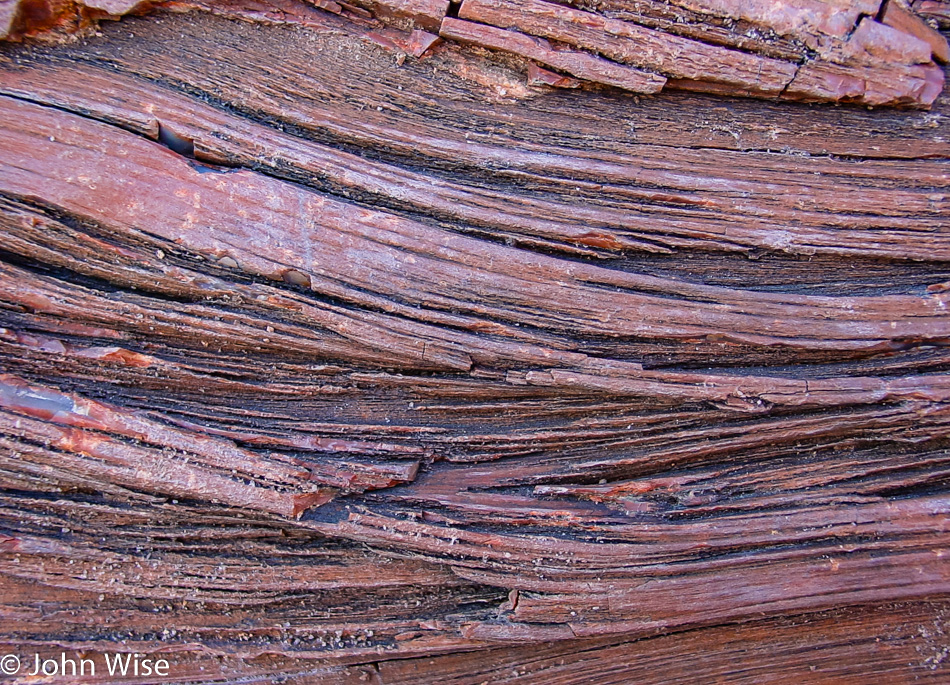
Over 200 million years later, and while my mind knows that this is stone, my fingers are still expecting a splinter should I slide my hand over this rock.
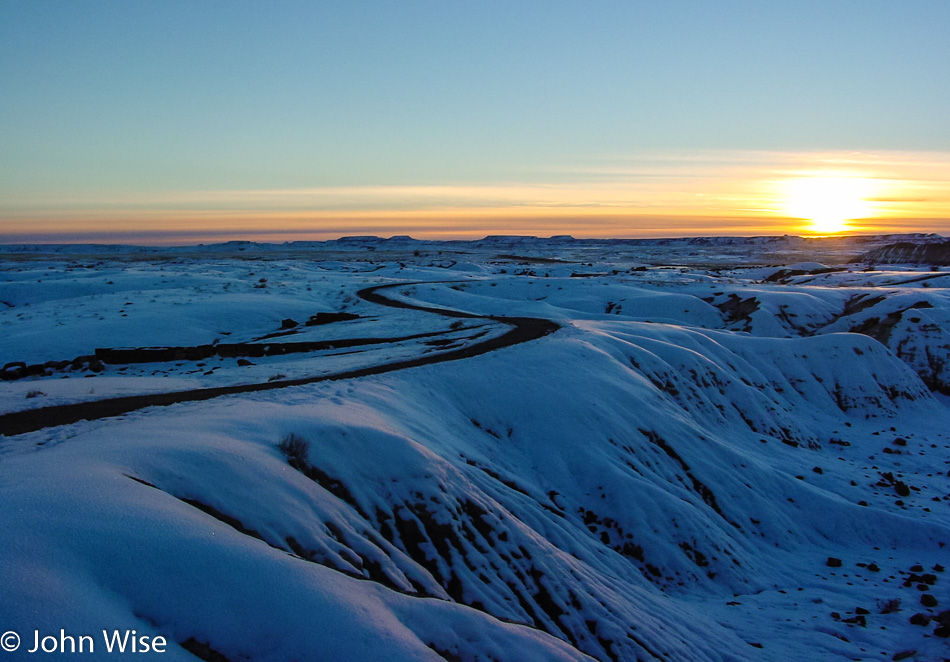
This trip into the southwest has been a great Christmas gift to ourselves, that is, of course, if we celebrated that holiday, though we are grateful for the free days off that don’t count against that all valuable vacation time. Time to go home and do laundry and think about what we might do for New Year’s Eve, if anything.
